SETTLEMENTS
TALYBONT ON USK
The lack of a bridge and only a dangerous ford cut the village off from the main road across the Usk. Development was due to the arrival of the canal in 1810, the direct link to the industrial regions around Tredegar via the Brinore Tramroad after 1815 and later the railway in 1863. The railway created the first Usk river bridge, Station Road and the Usk Hotel. The oldest buildings are Maesmawr, Gilestone and Talybont farms, the Malthouse, and the former Maesmawr mill on Station Road. Post war expansion saw the creation of council initiated building of Pen Pentre and Canol Pentre estates. Private development followed at Maesmawr and Station Road. An intriguing building is the narrow brick edifice against the canal bank which initially was tea rooms The White Hart and the Star have changed little in appearance and continue to thrive, with the former having a successful bunk house as an addition. In the past the village had five public houses, a foundry, wheelwright, smithy, sawmill, three shops,two mills,a woollen mill, a bakery. a school and a post office. Talybont Stores now provide a wide range of service with a popular cafe. The garage is a long established business that started off as a blacksmith’s forge. J l Stephens continue as building contractors since 1948.
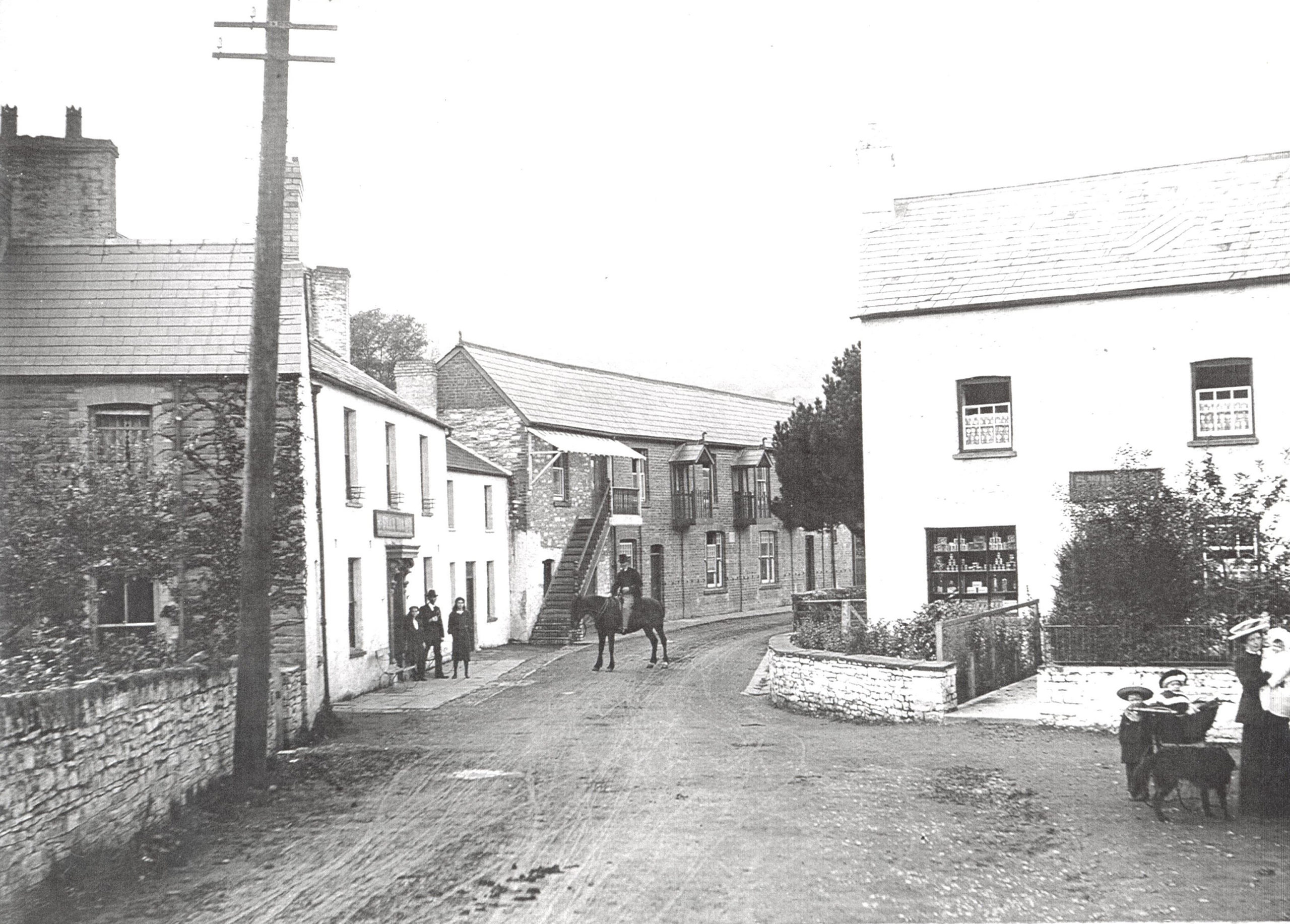
Star buildings cafe beyond the pub 1903
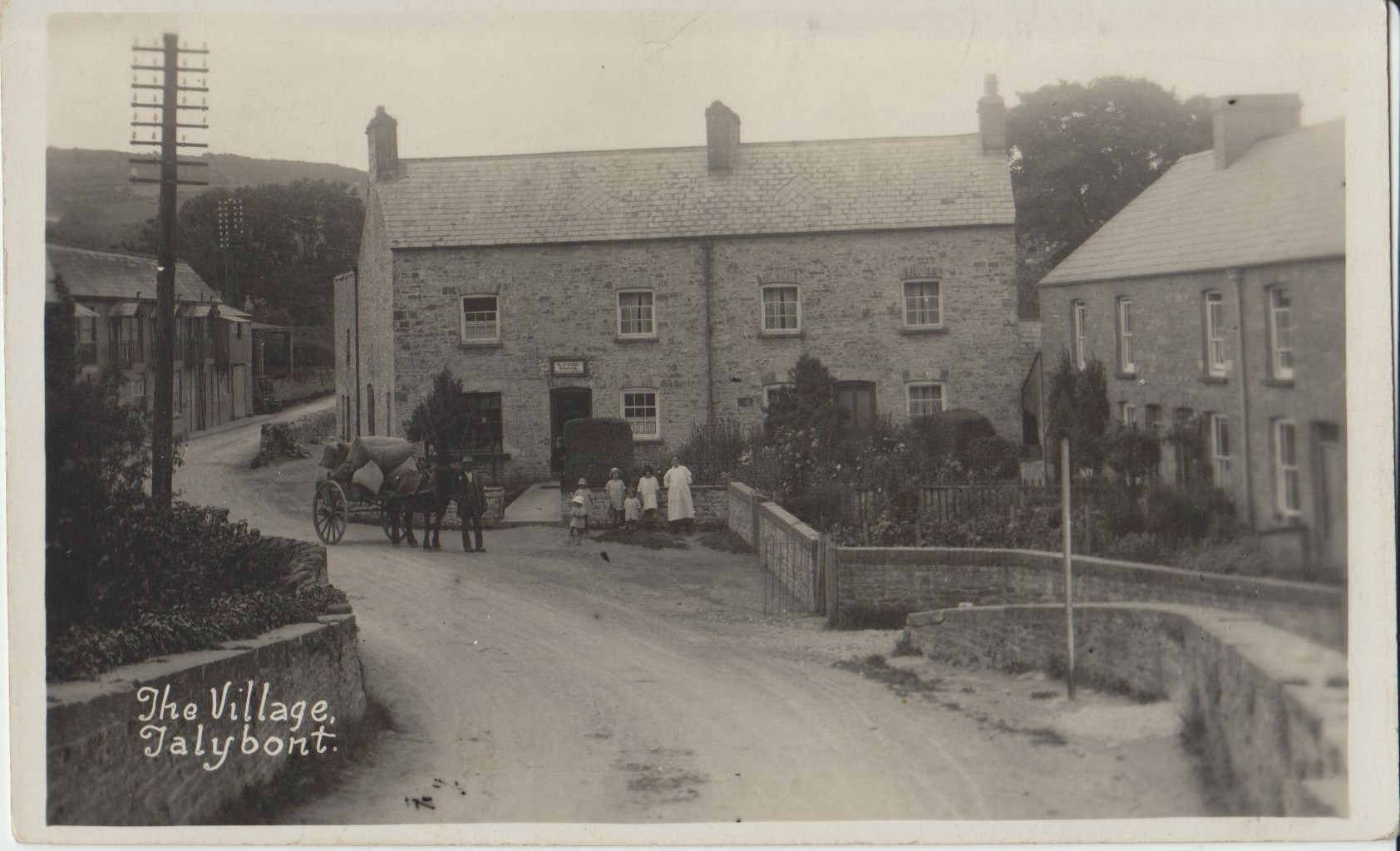
Craig View shop late 1890’s
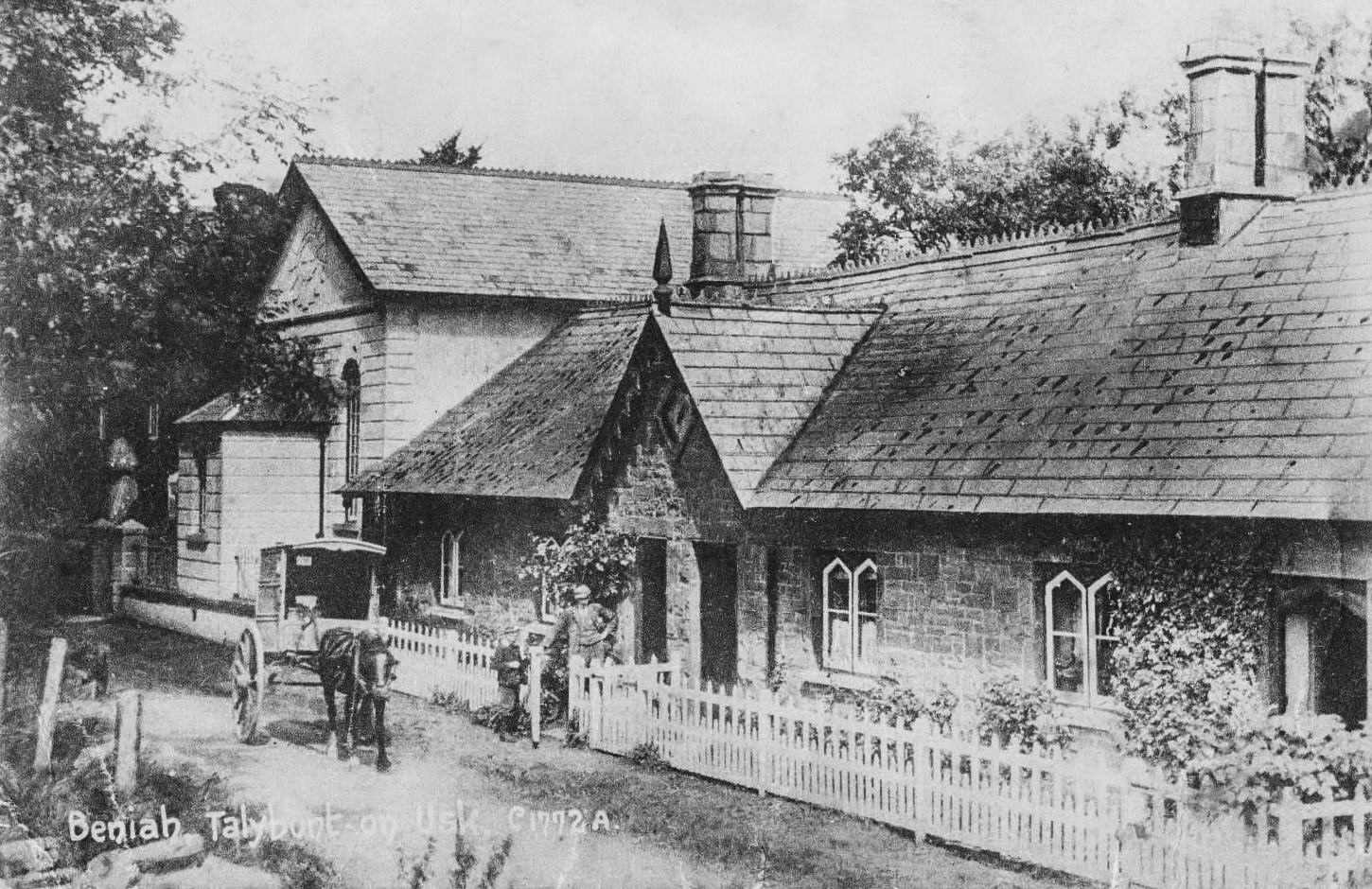
The Alms Houses with Benaiah Chapel late 1920’s
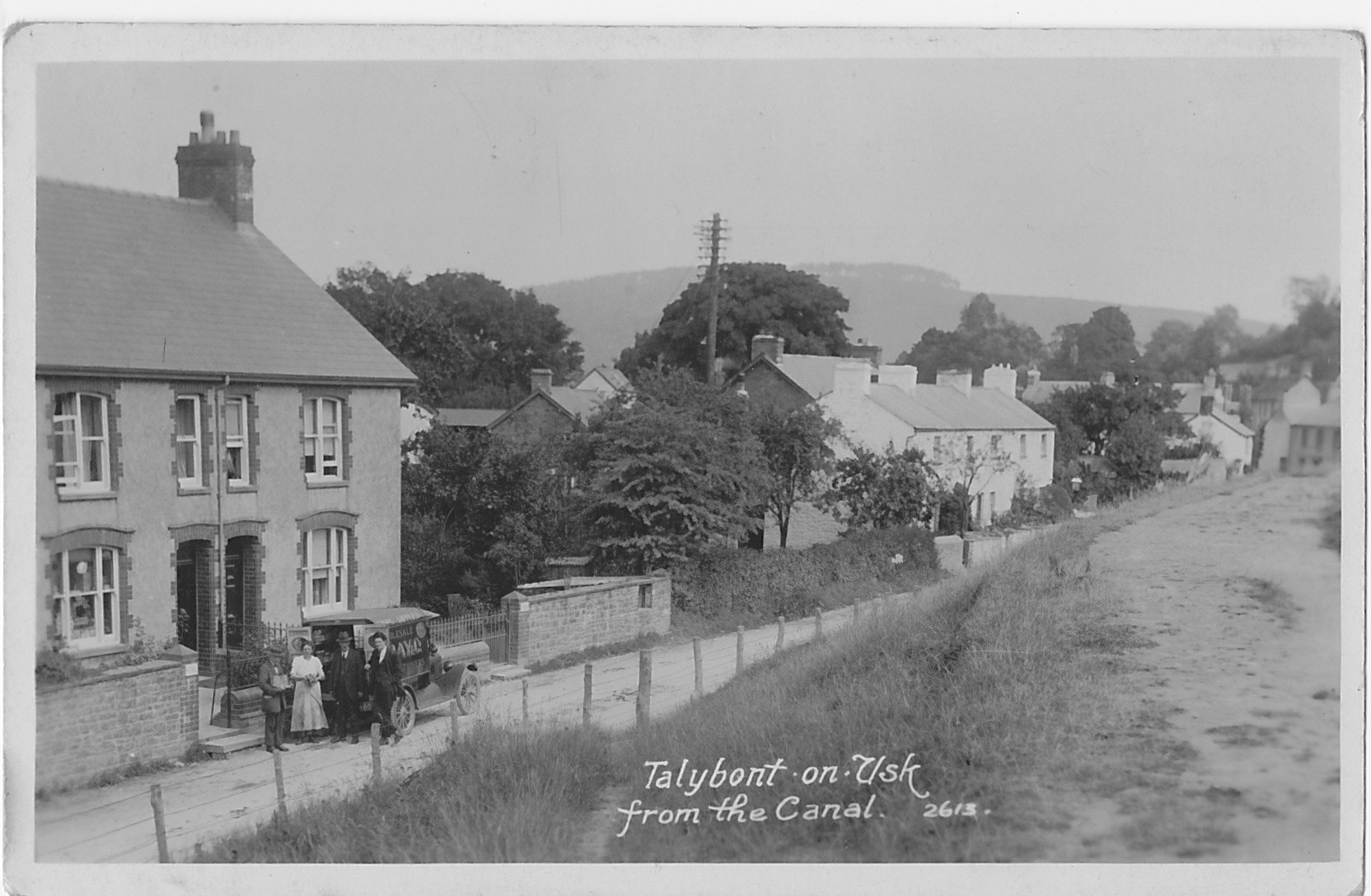
Harris’ Bakery and shop at Lydenburg on the left early 1930’s
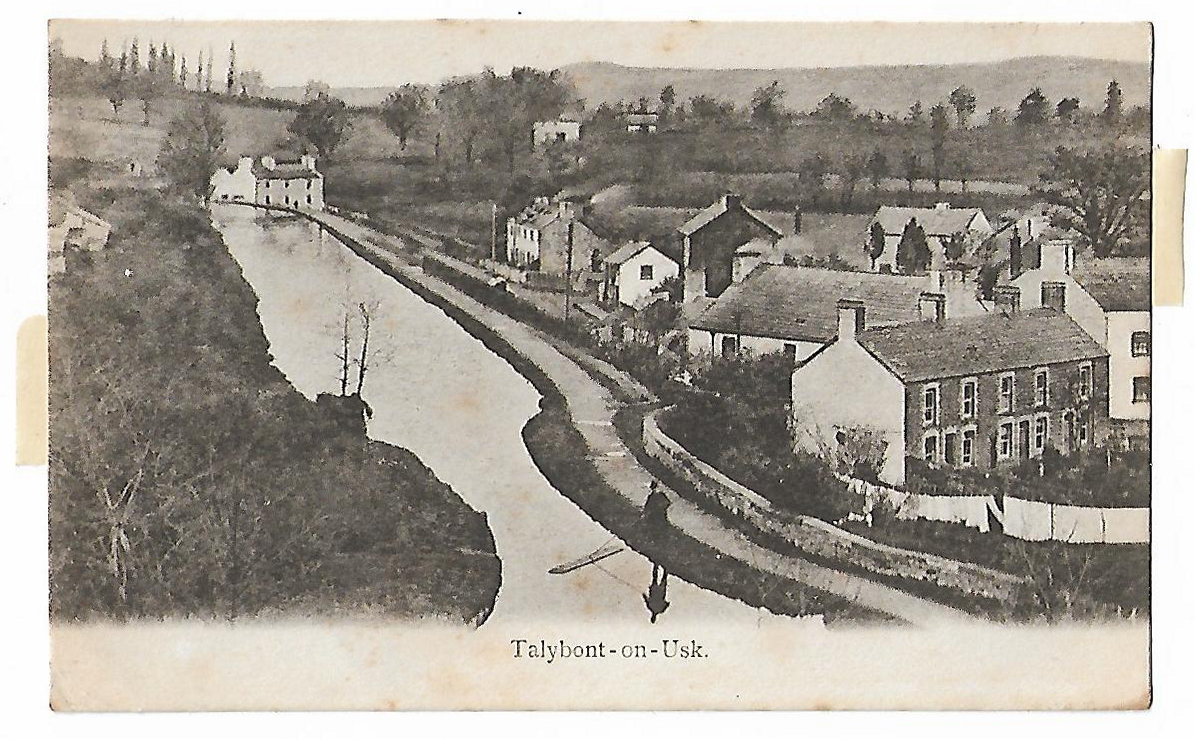
Talybont Canal Postcard 1927
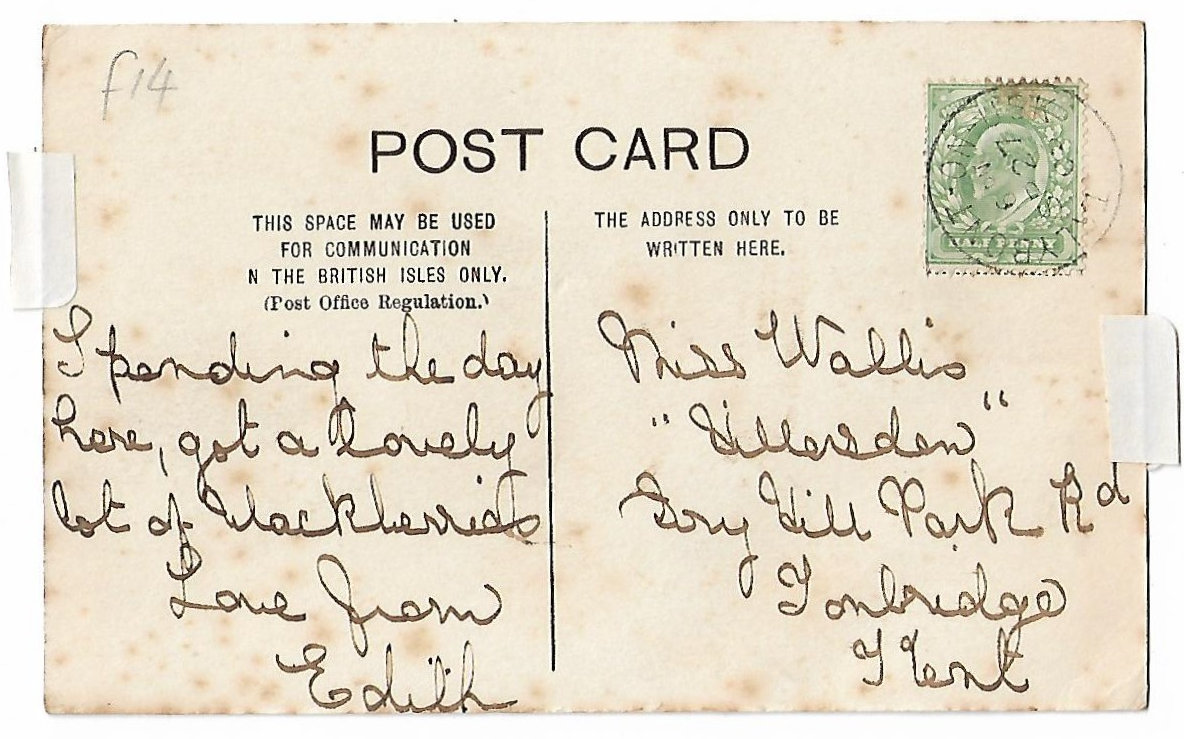
Reverse of canal postcard with Talybont post office franking 1927
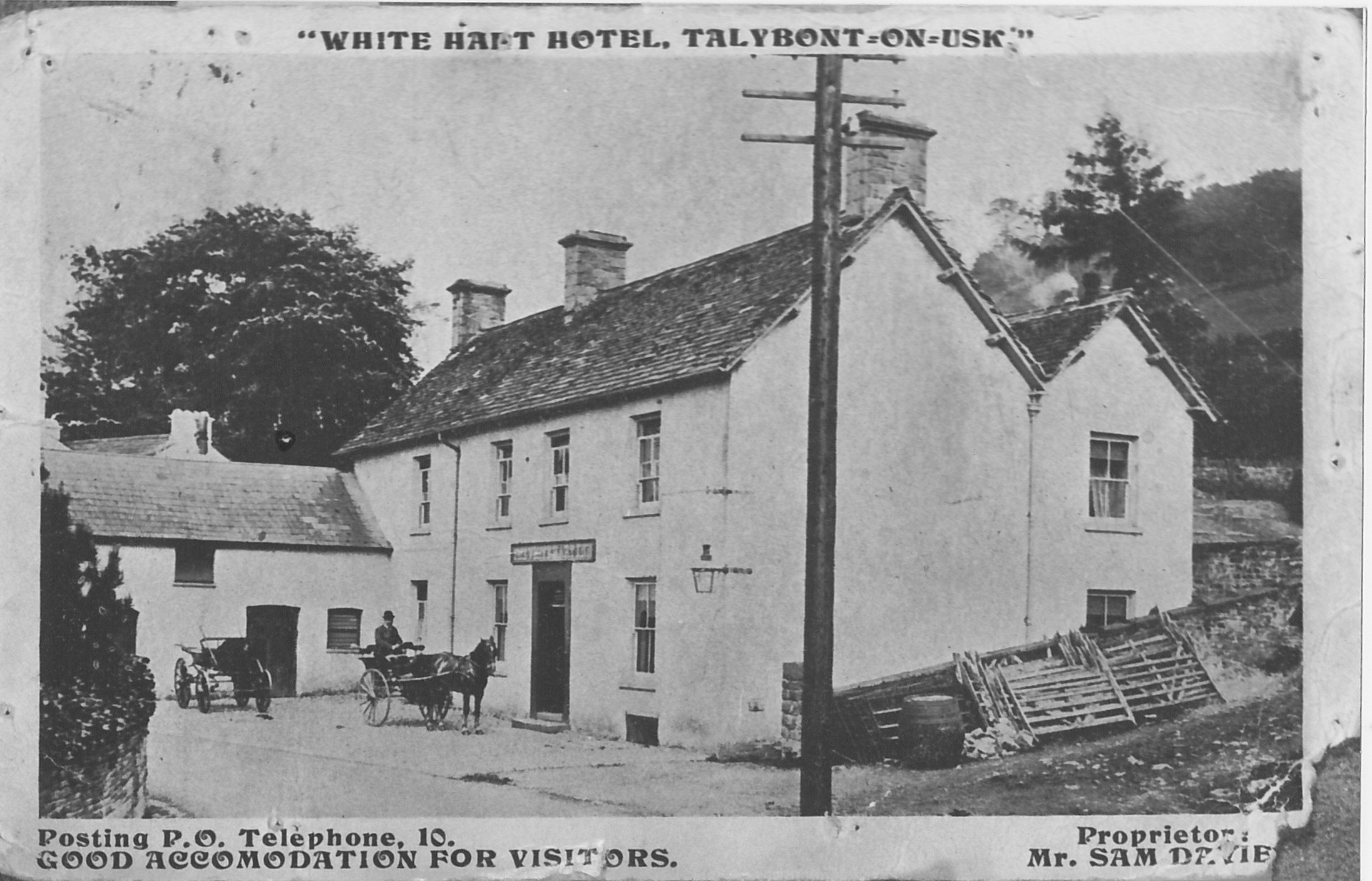
The White Hart 1920’s
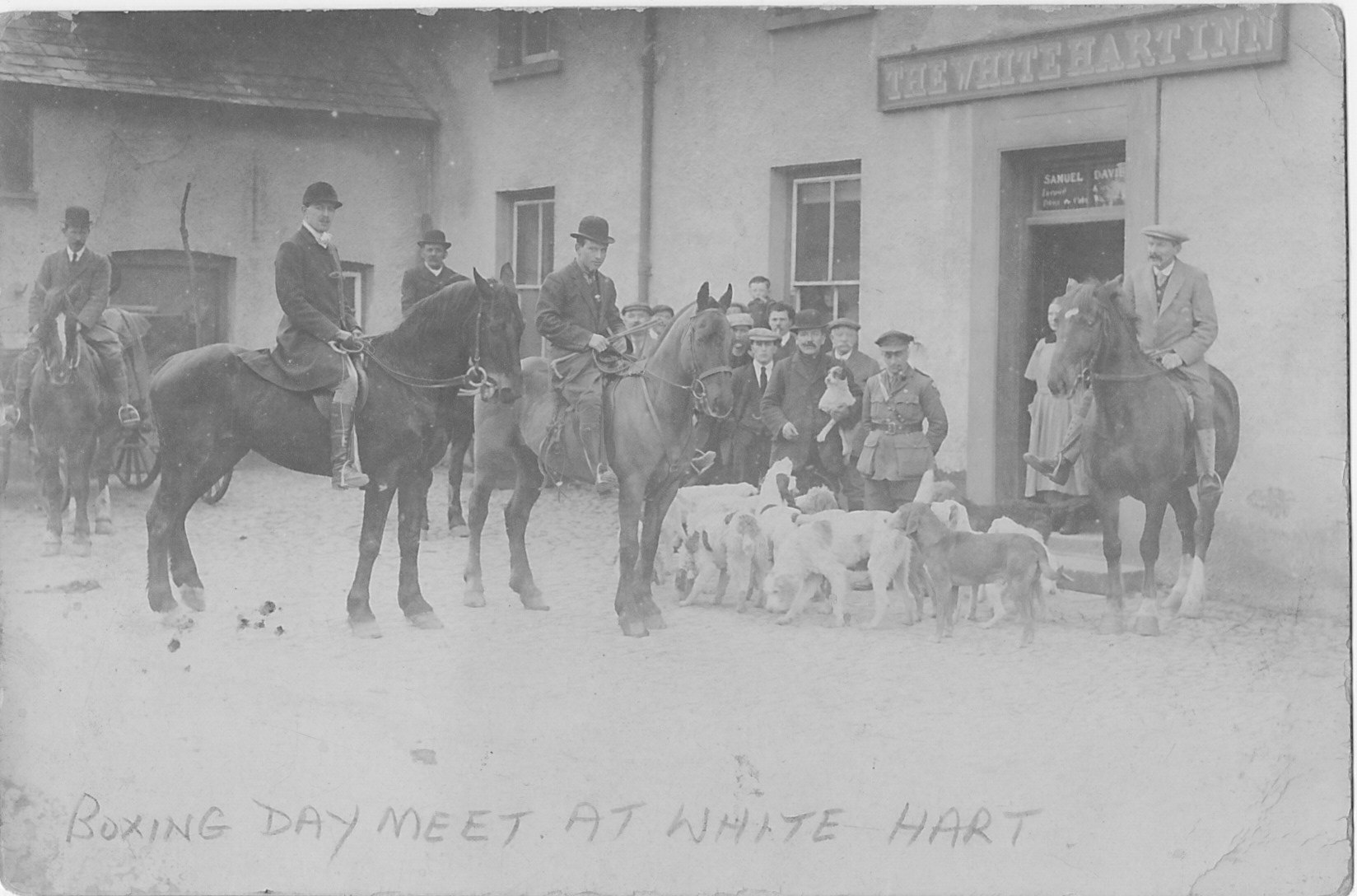
Meet at the White Hart 1920’s
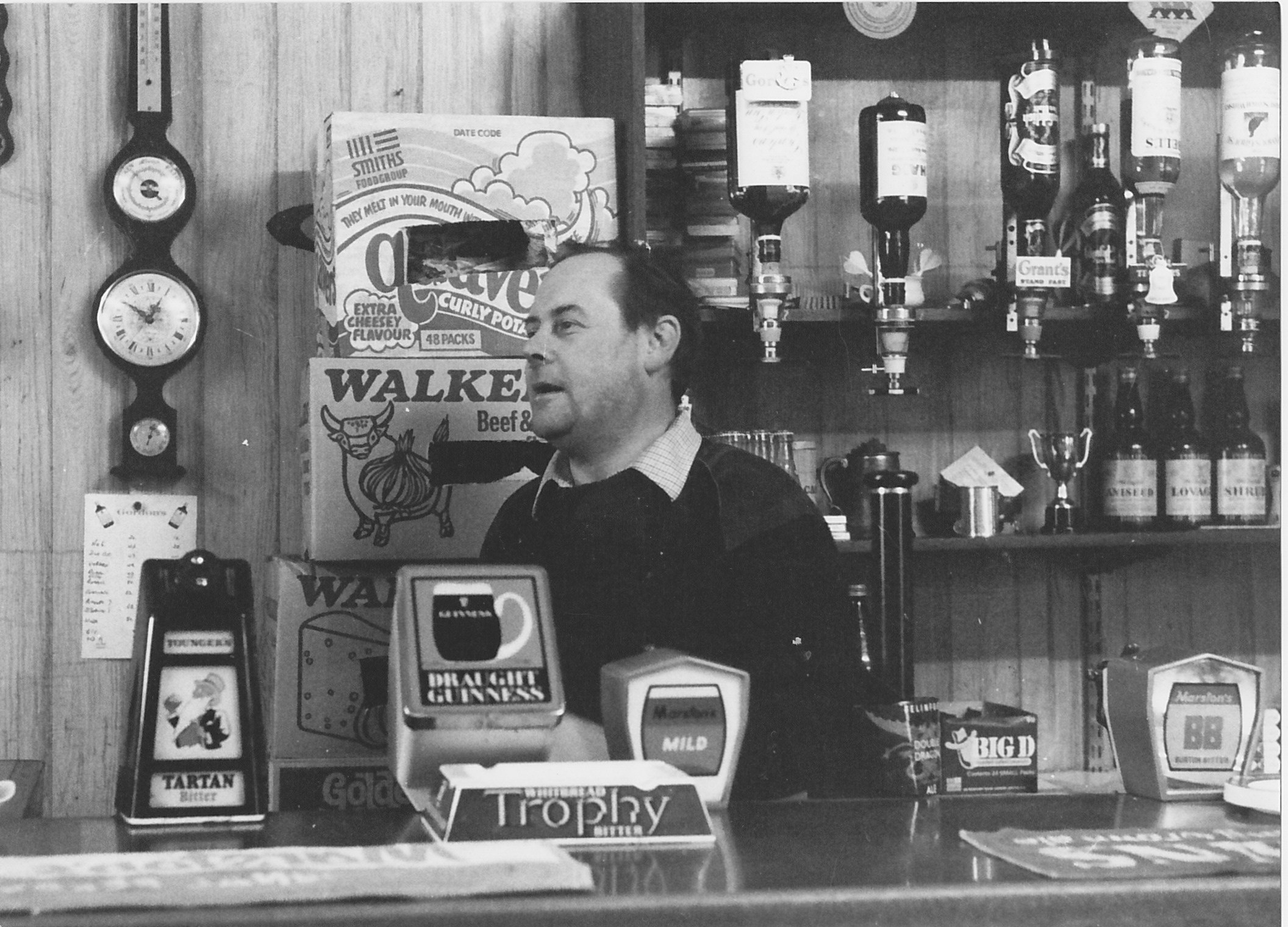
Mike Evans landlord of the White Hart 1984
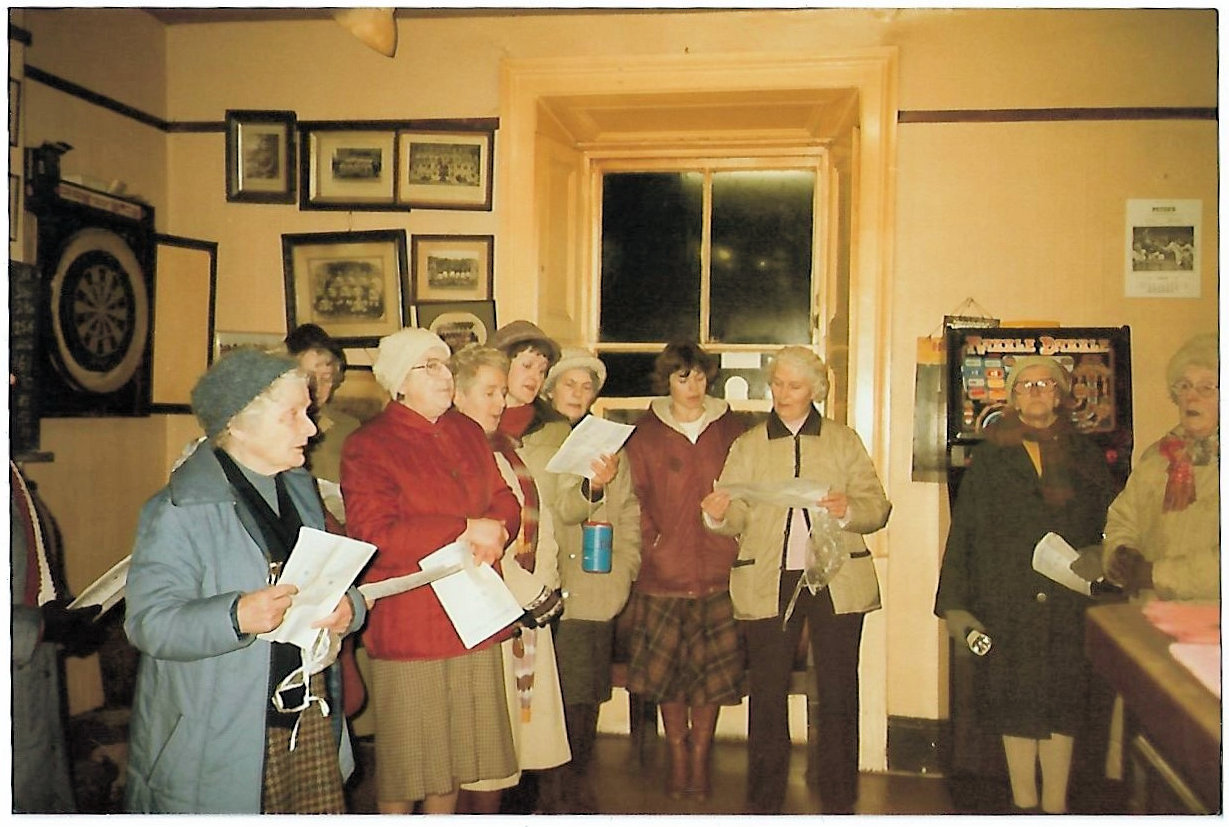
Interior of White Hart with WI carol singers early1980’s
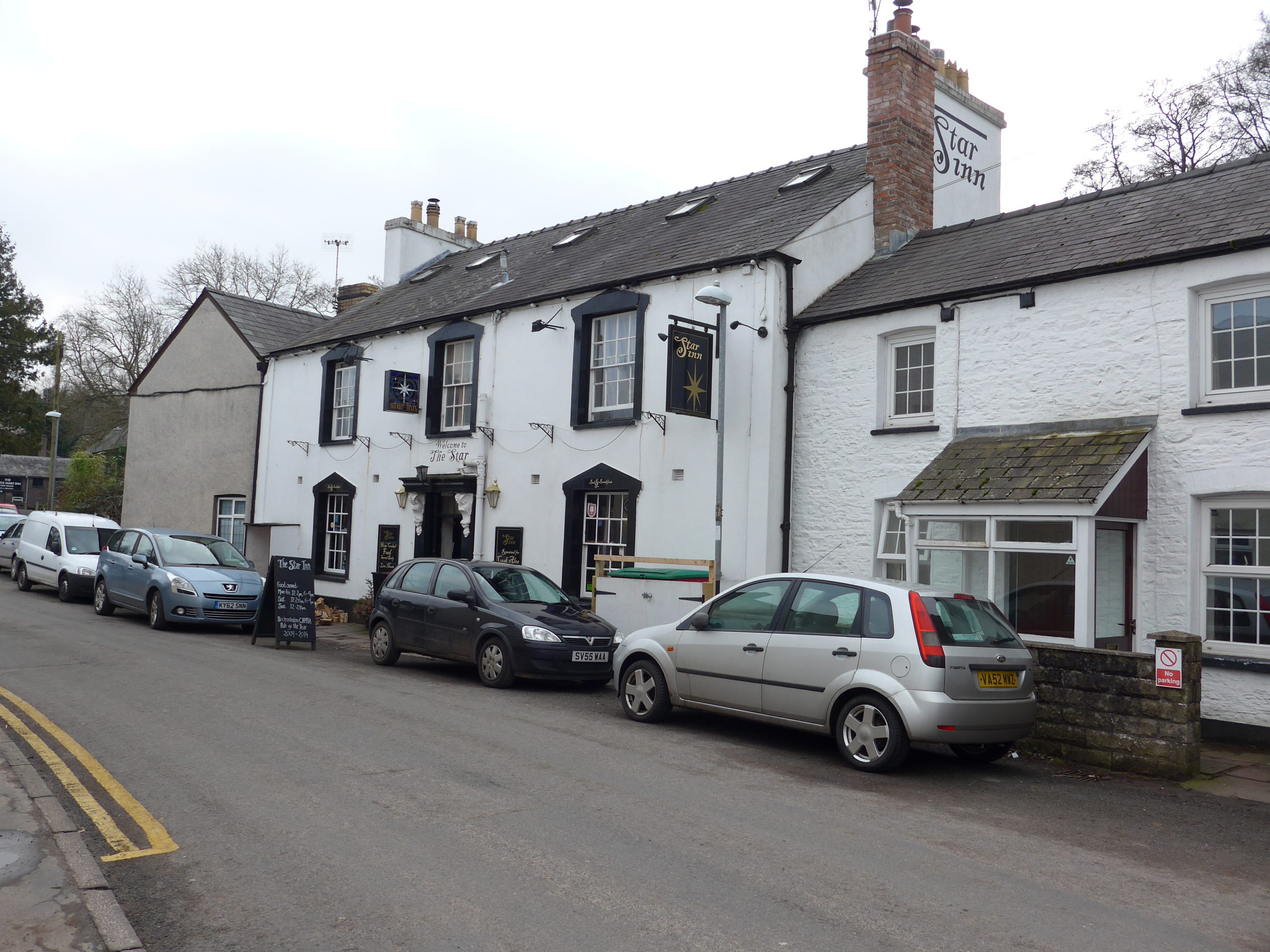
The Star Inn
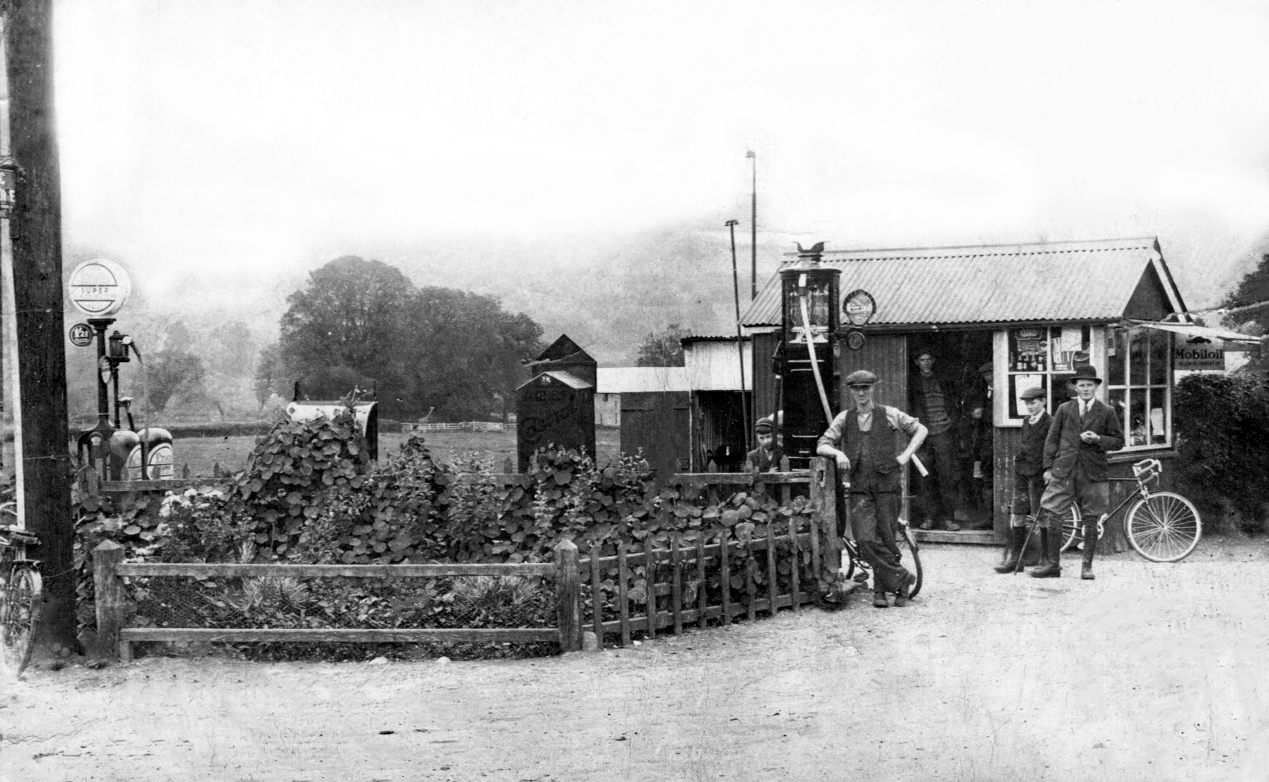
The Garage Talybont 1928
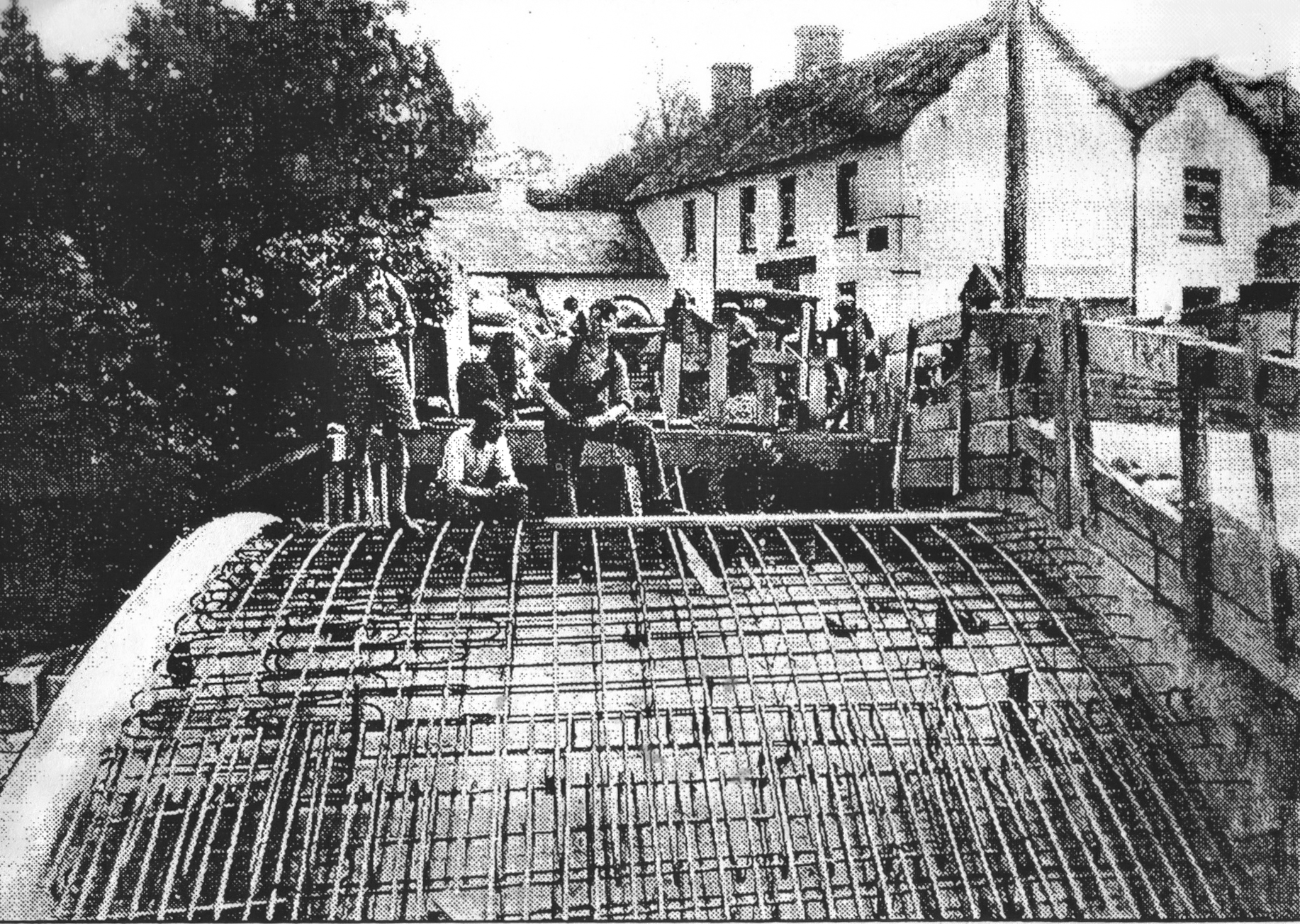
Bridge Building Caerfanell 1930
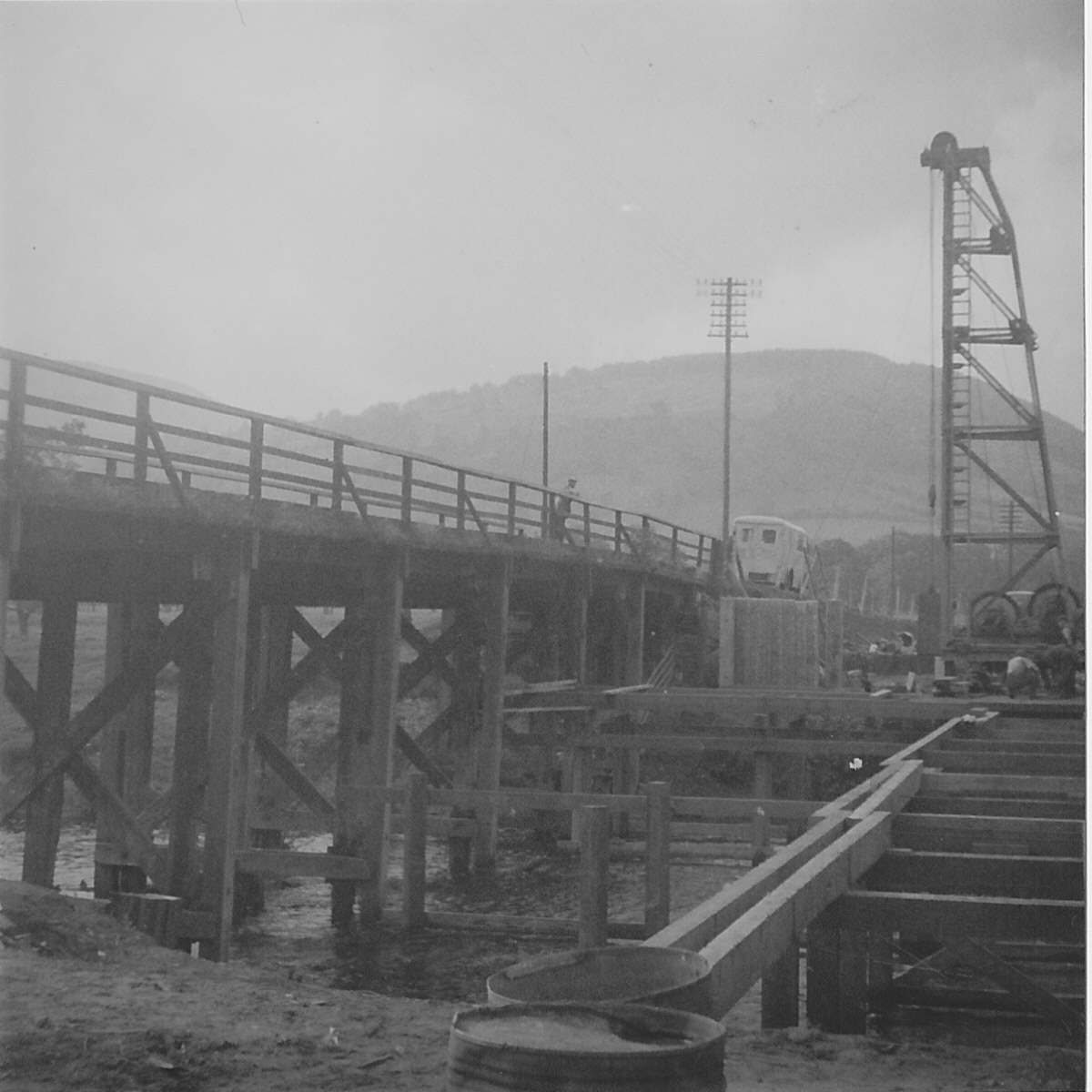
Rebuiling the Usk railway bridge 1955
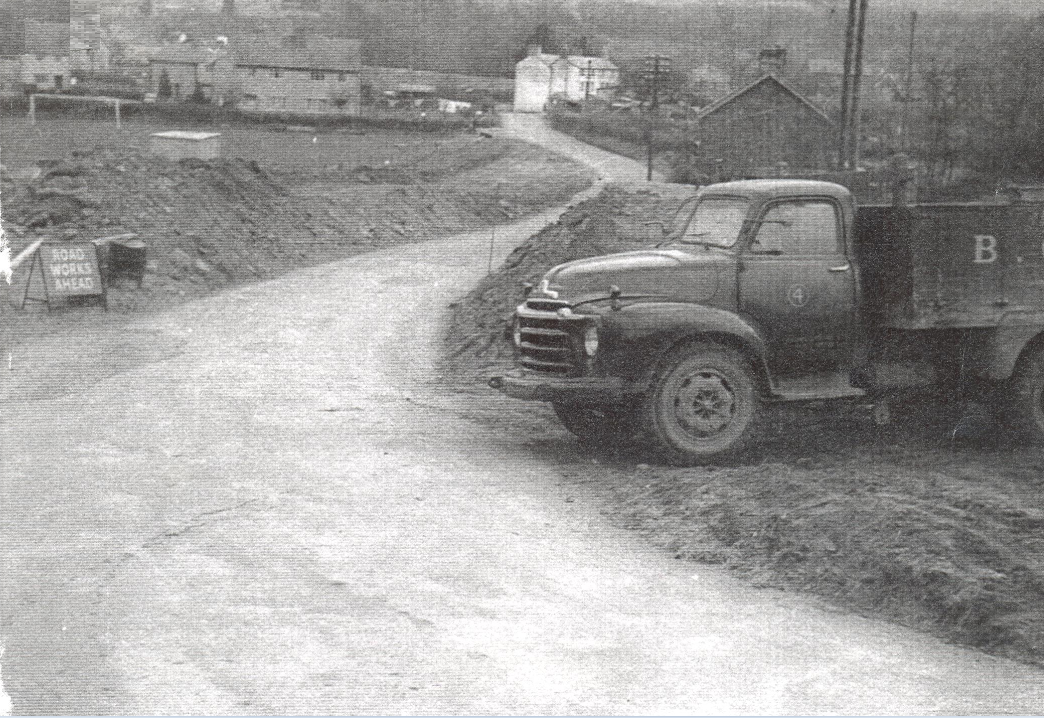
Talybont from Benaiah bridge early 1950’s
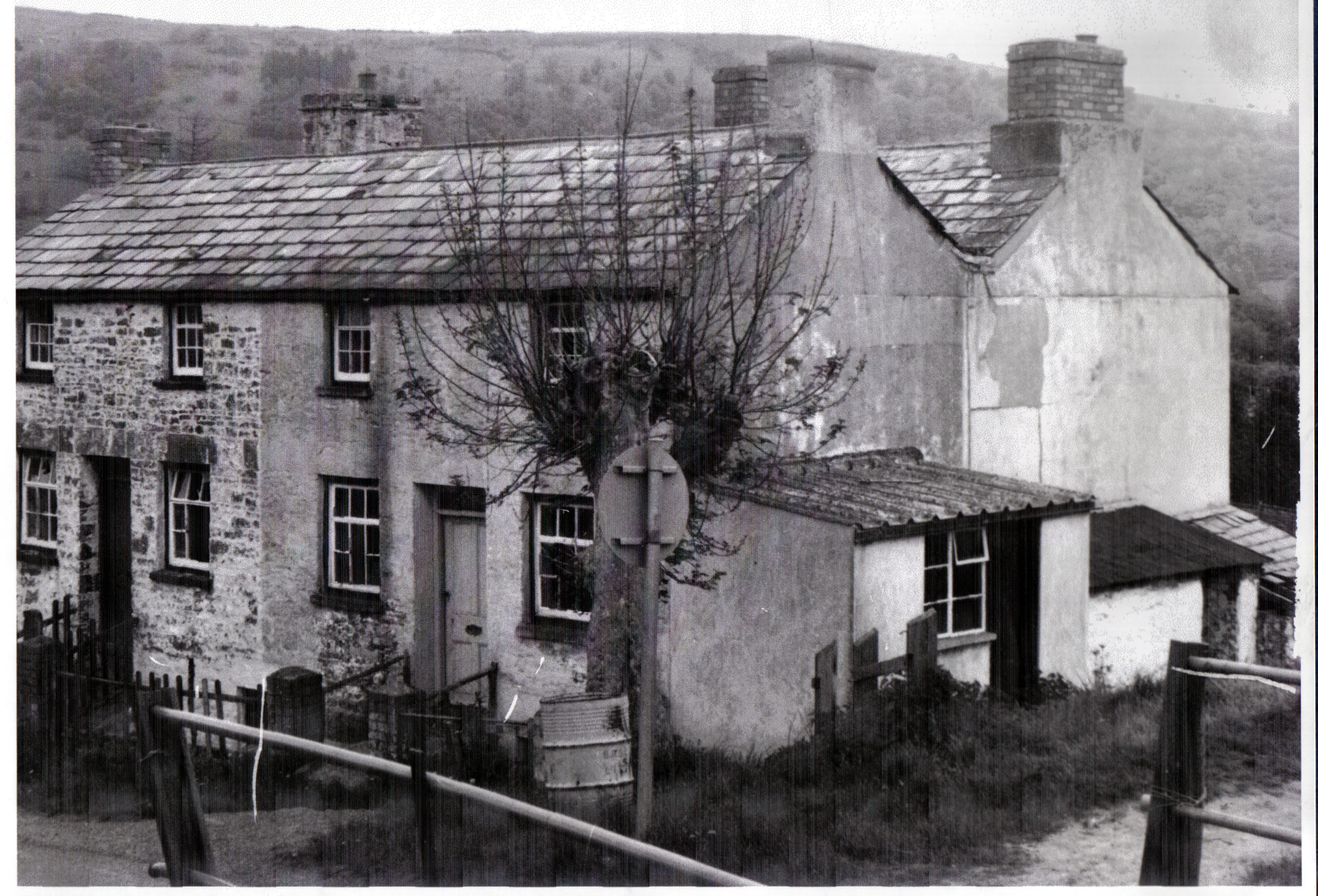
Drawbridge cottages from the towpath 1958
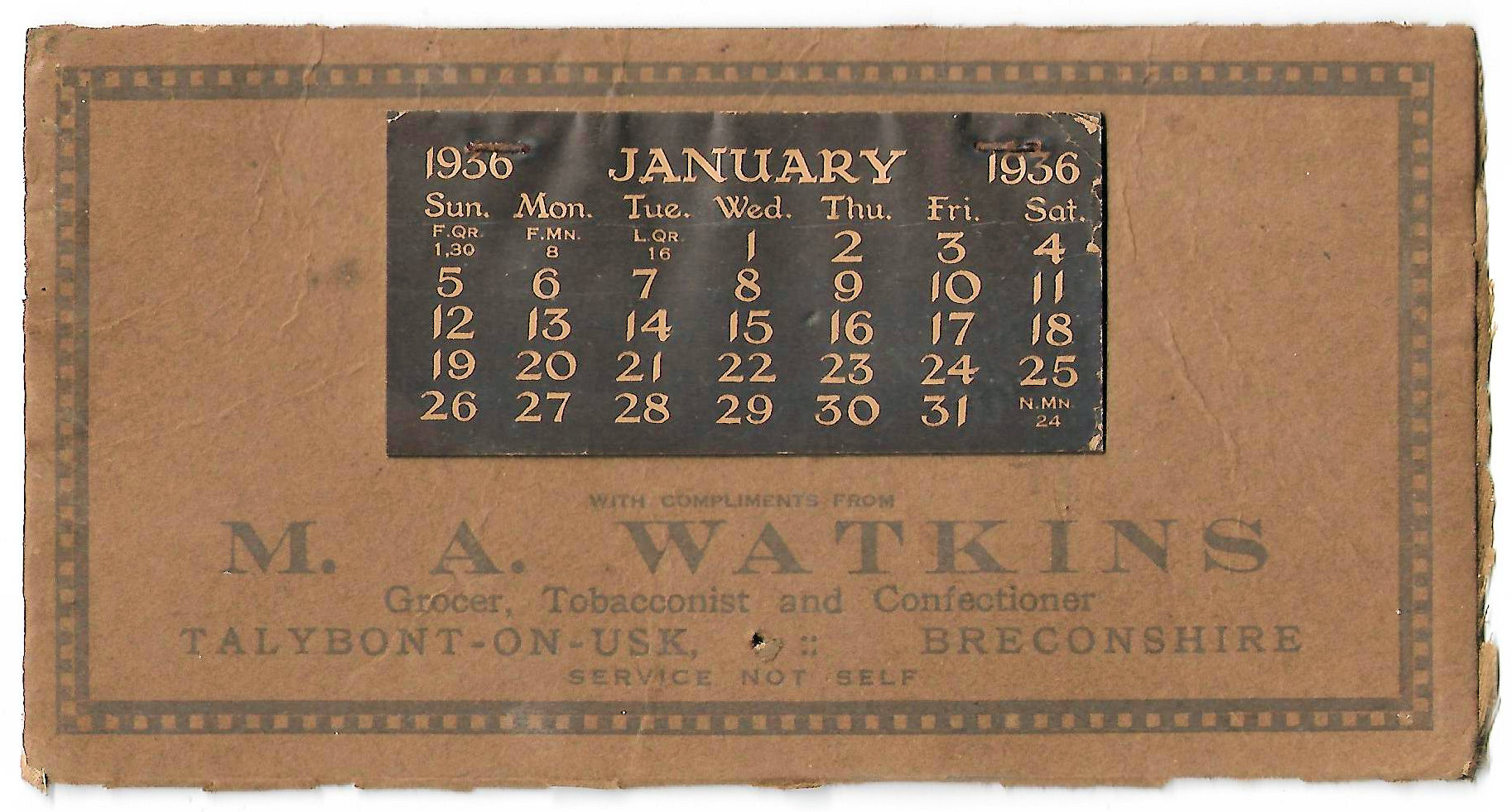
Dai and Dolly Watkins’ Shop.
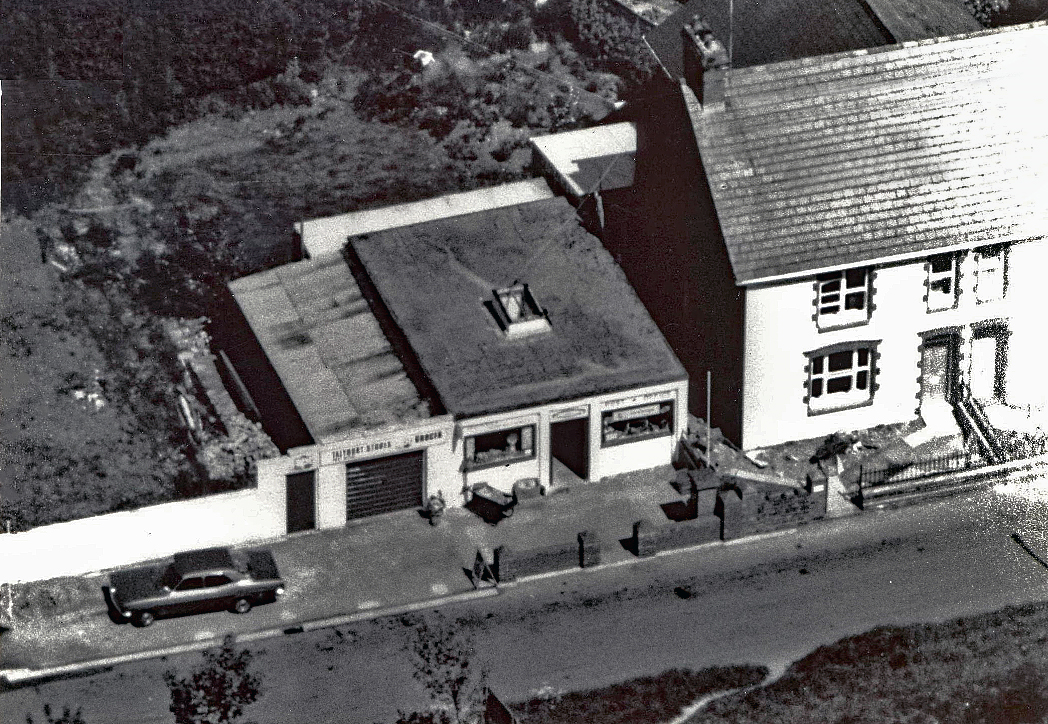
Talybont Stores 1942
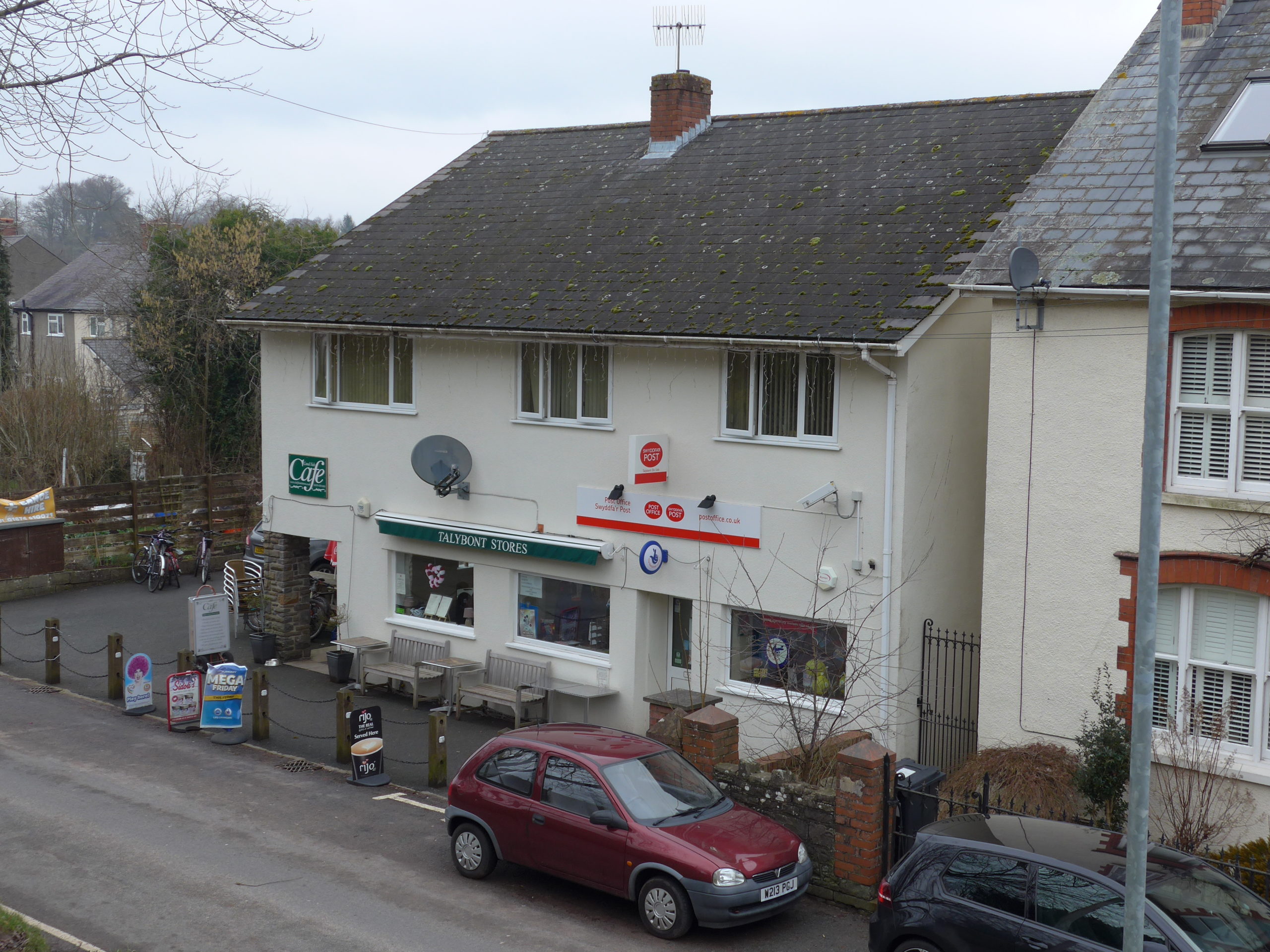
Talybont Stores
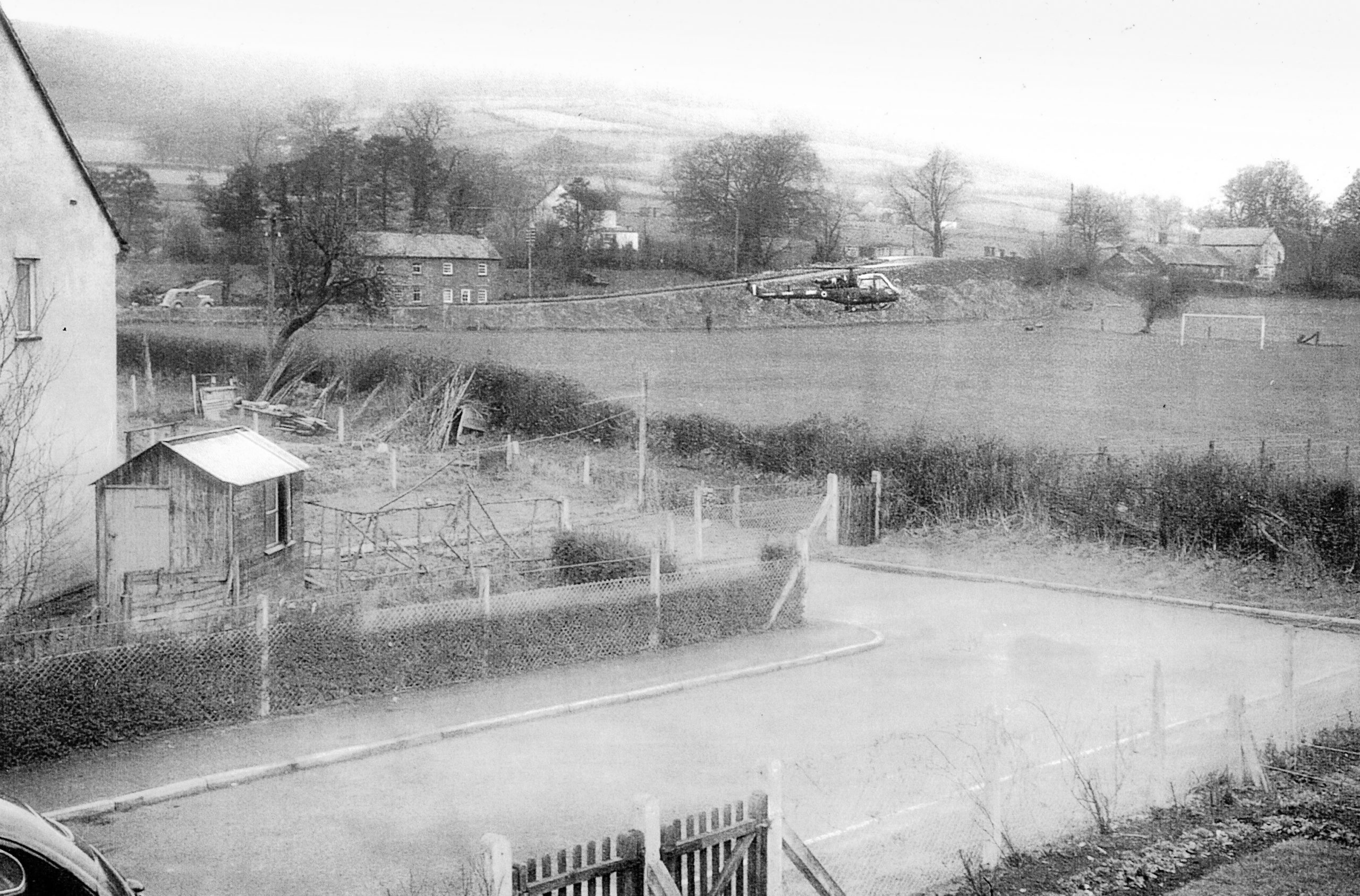
Penpentre before the building of the Henderson Hall 1959
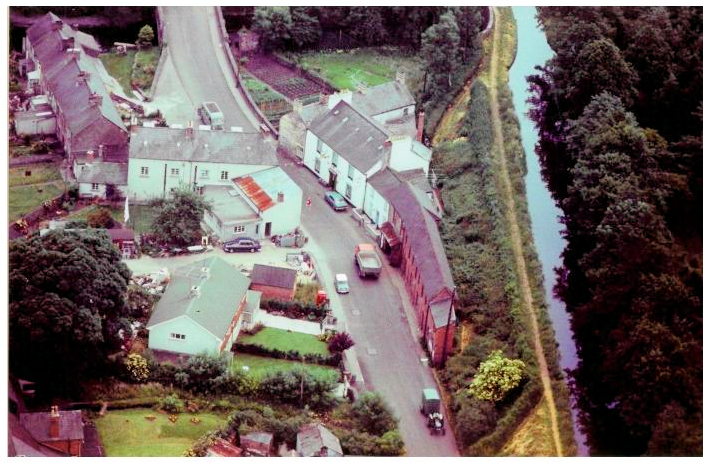
Talybont aerial view 1961
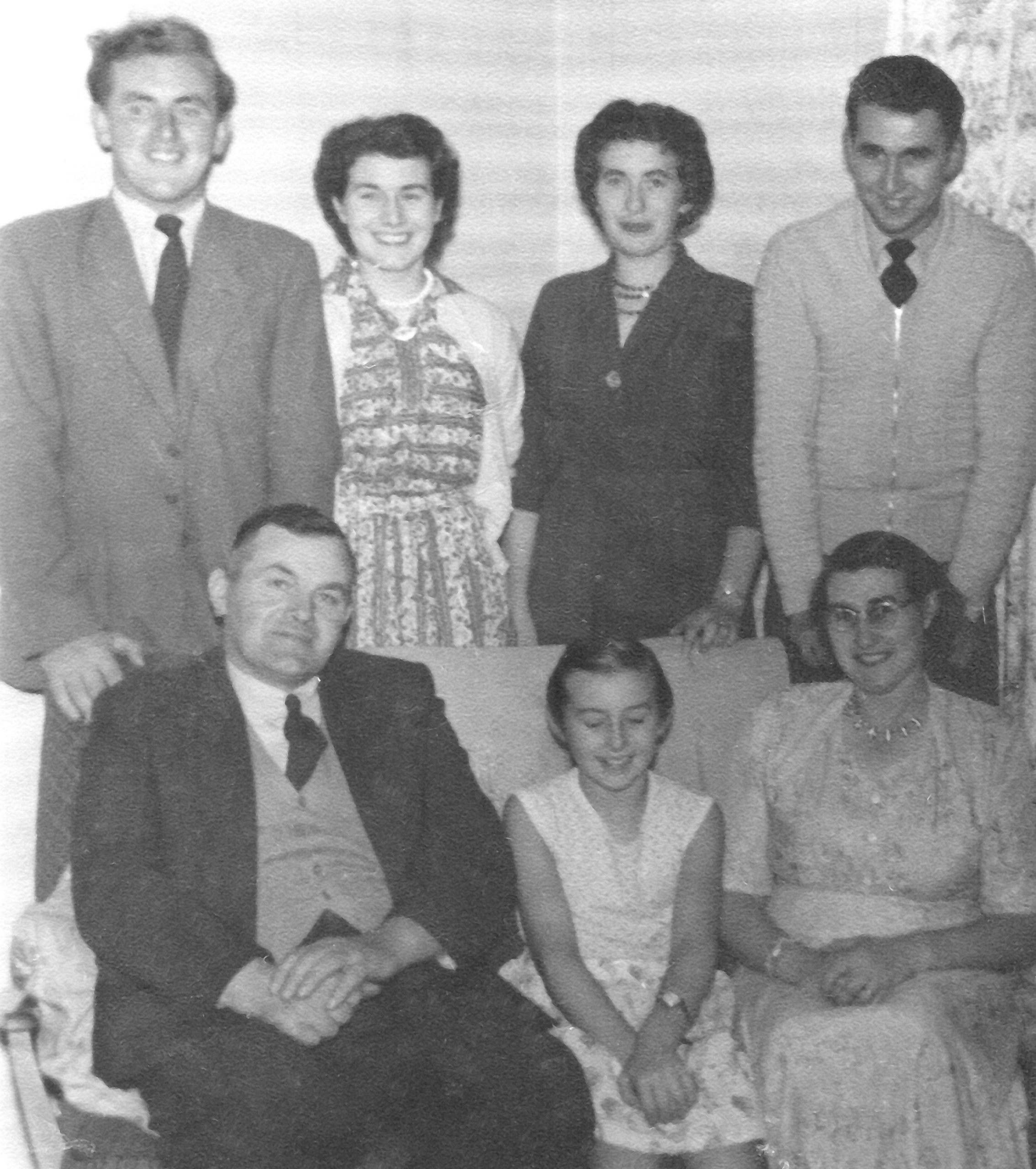
Stephens Family Post Office Row 1959
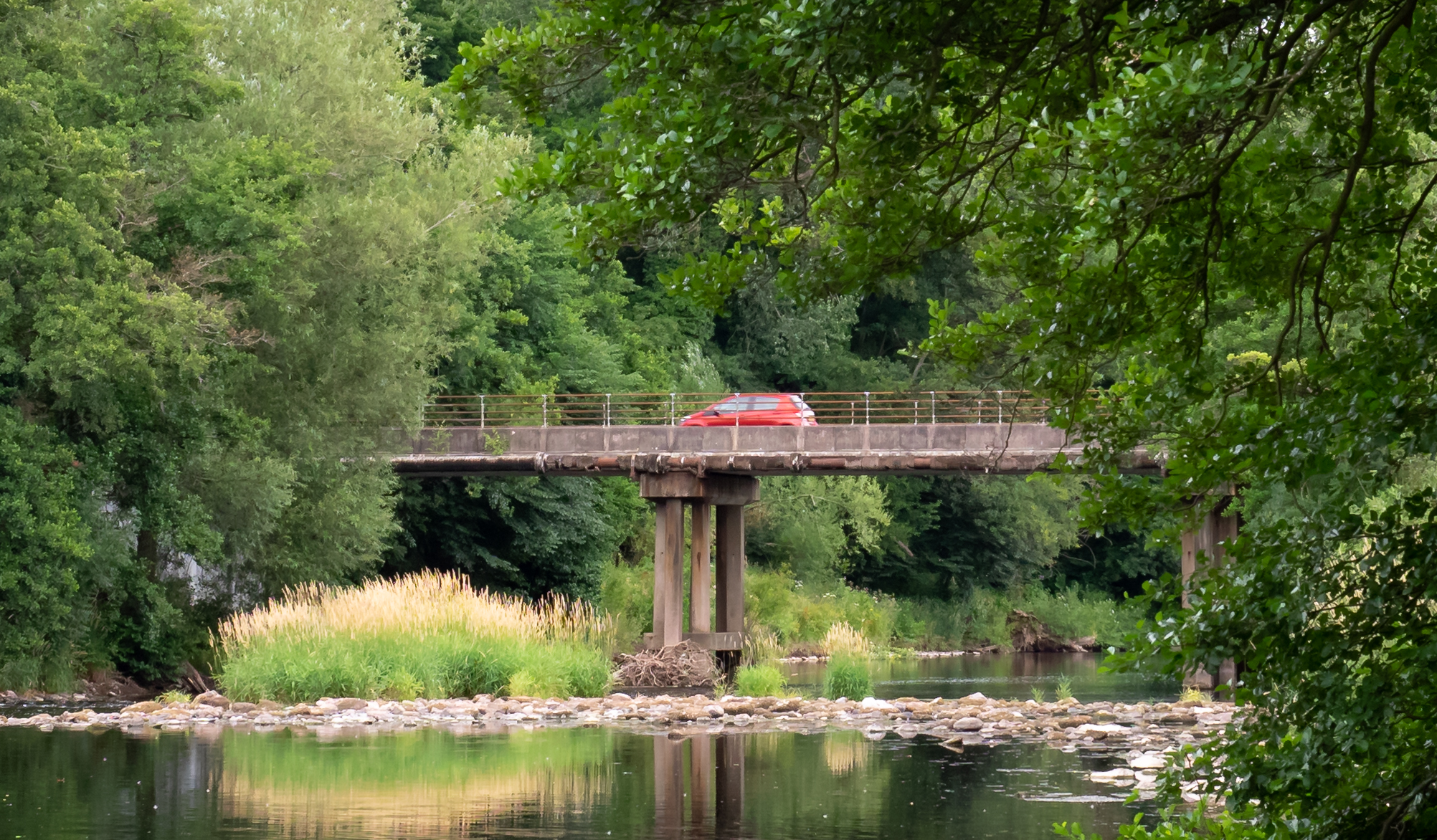
Bridge River Usk
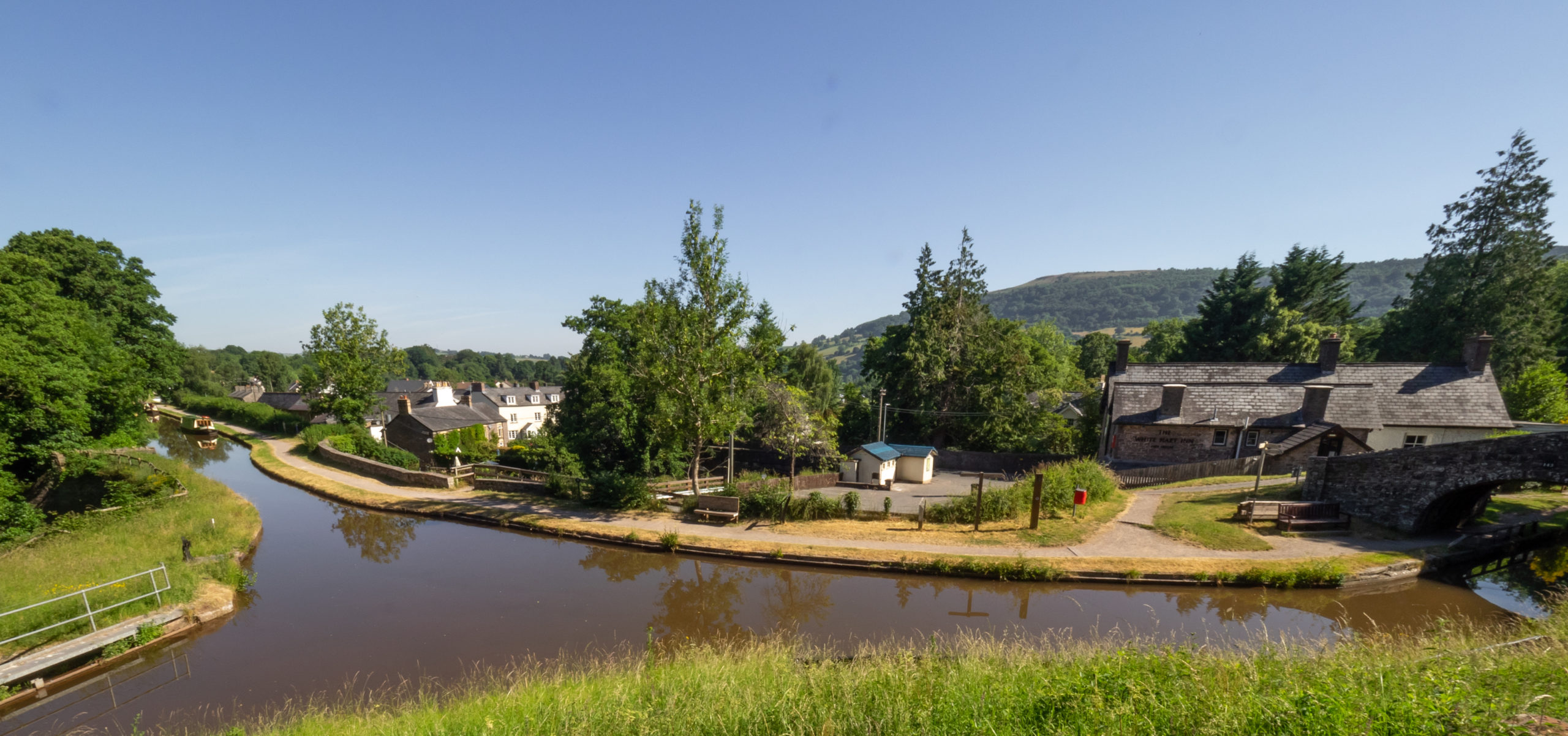
Talybont from the canal 2019
SCETHROG
The name is considered to derive from the Welsh Sgathrog meaning a rough or rocky settlement. In the early 13th century it was committed to paper as Skathrok and there is a steady flow of references throughout the medieval era and into Tudor times with Skethrog appearing in 1578 and Skatherogg in 1583. The nature of the settlement remains uncertain. That there was something here in the Middle Ages is indicated by the occurrence of the place-names noted above but these could refer only to a manorial centre. It has also been suggested that this could have been part of an early sub-lordship centred on the Llansantffraed area. Prominent buildings are Scethrog Tower probably originating in the 14th century, Hen Persondy C17, Scethrog House 1691 and Neuadd a long house derivative estimated to be C17.
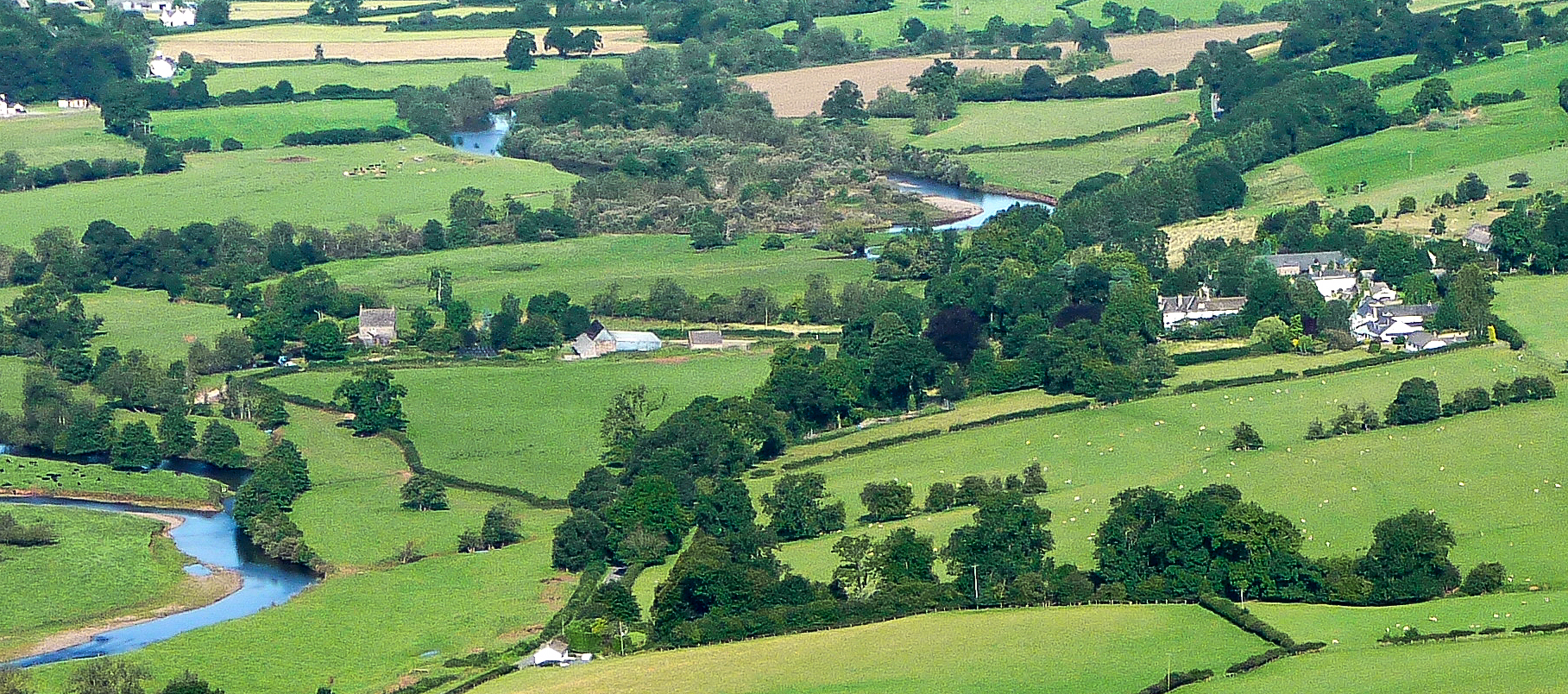
Scethrog
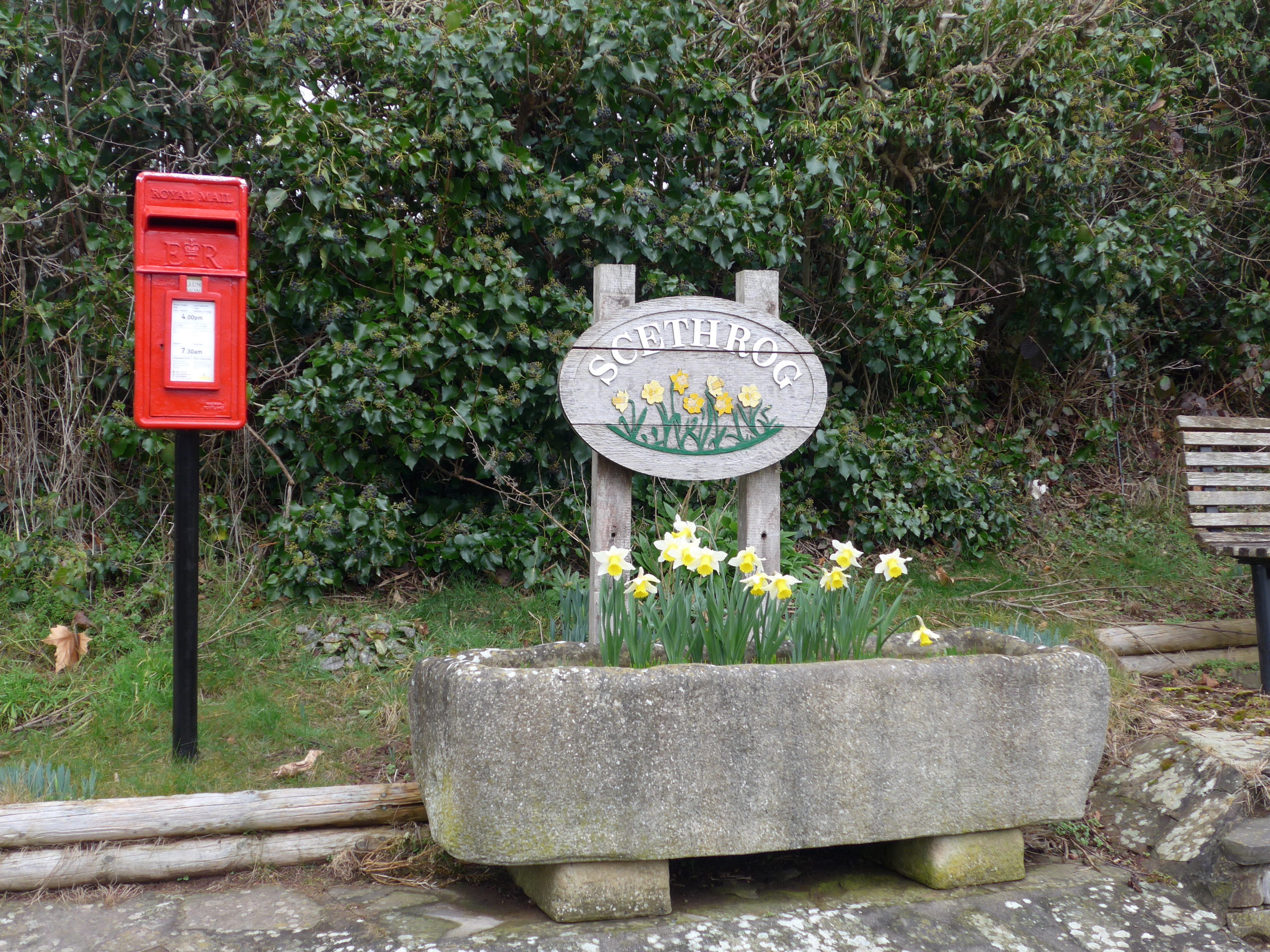
Scethrog village sign
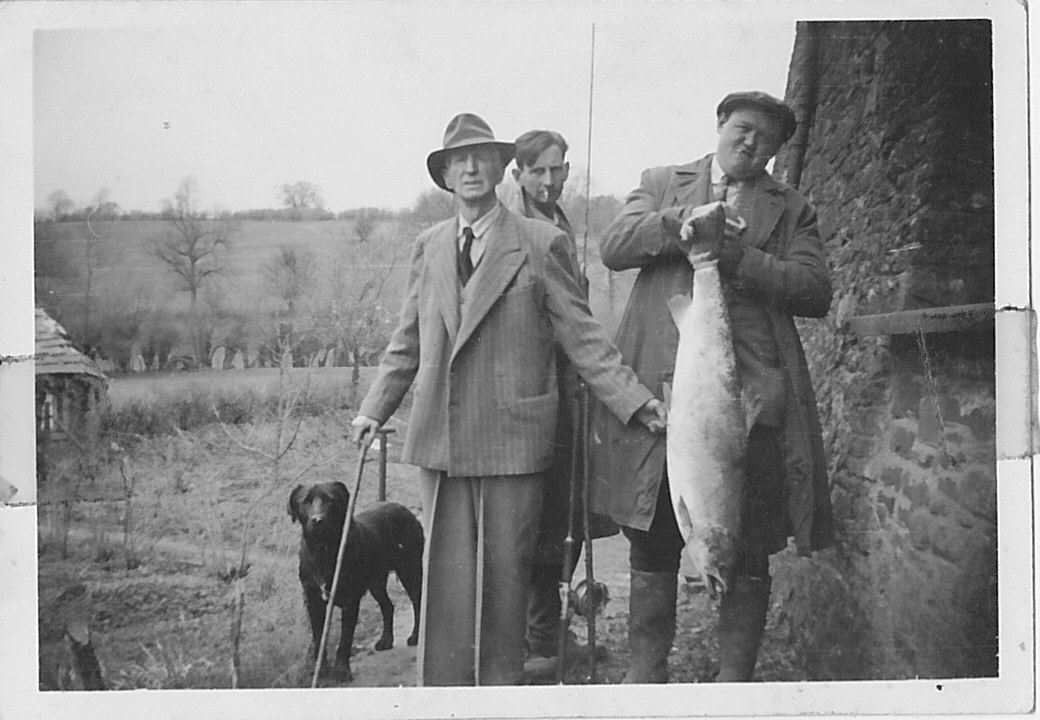
A Mr Jefferson with Mel Budden holding the salmon 1975
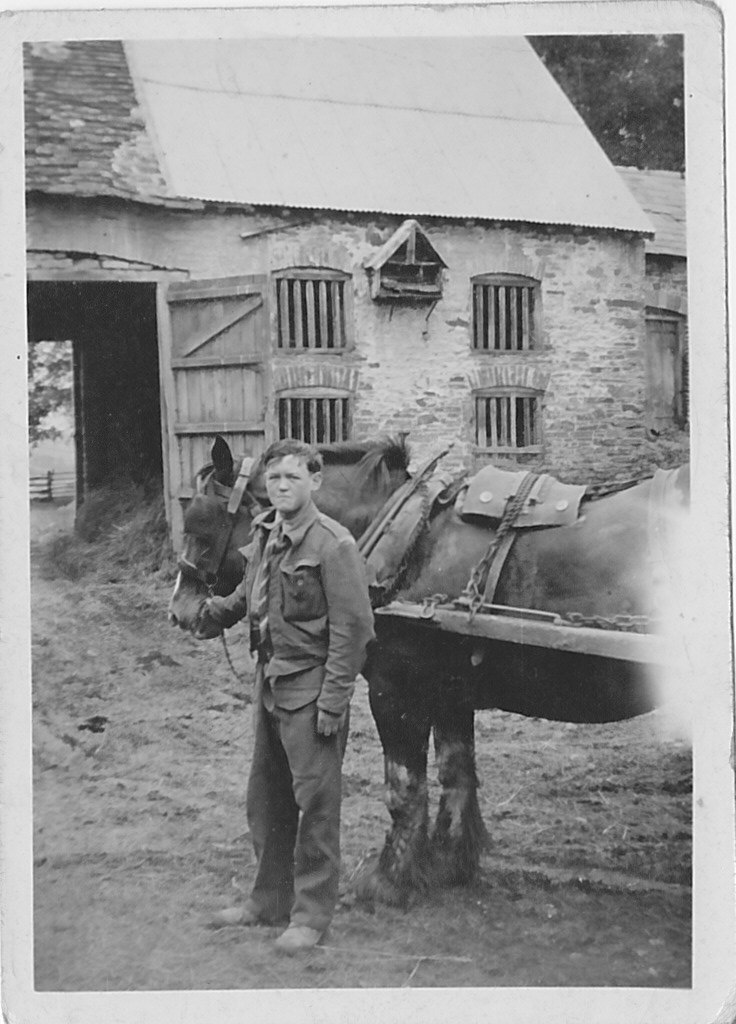
Mel Budden at Ty Newydd 1947
A40 EXPLOSION OCTOBER 1957
Due to fog the drivers of a lorry loaded with three and a half tons of TNT destined for an opencast site in Glynneath stopped to clear their windscreen only to find a rear tyre on fire. Realising the danger they ran up the road to warn motorists when there was a massive explosion. No one was hurt but houses in the vicinity especially the Scethrog Post office were badly damaged.
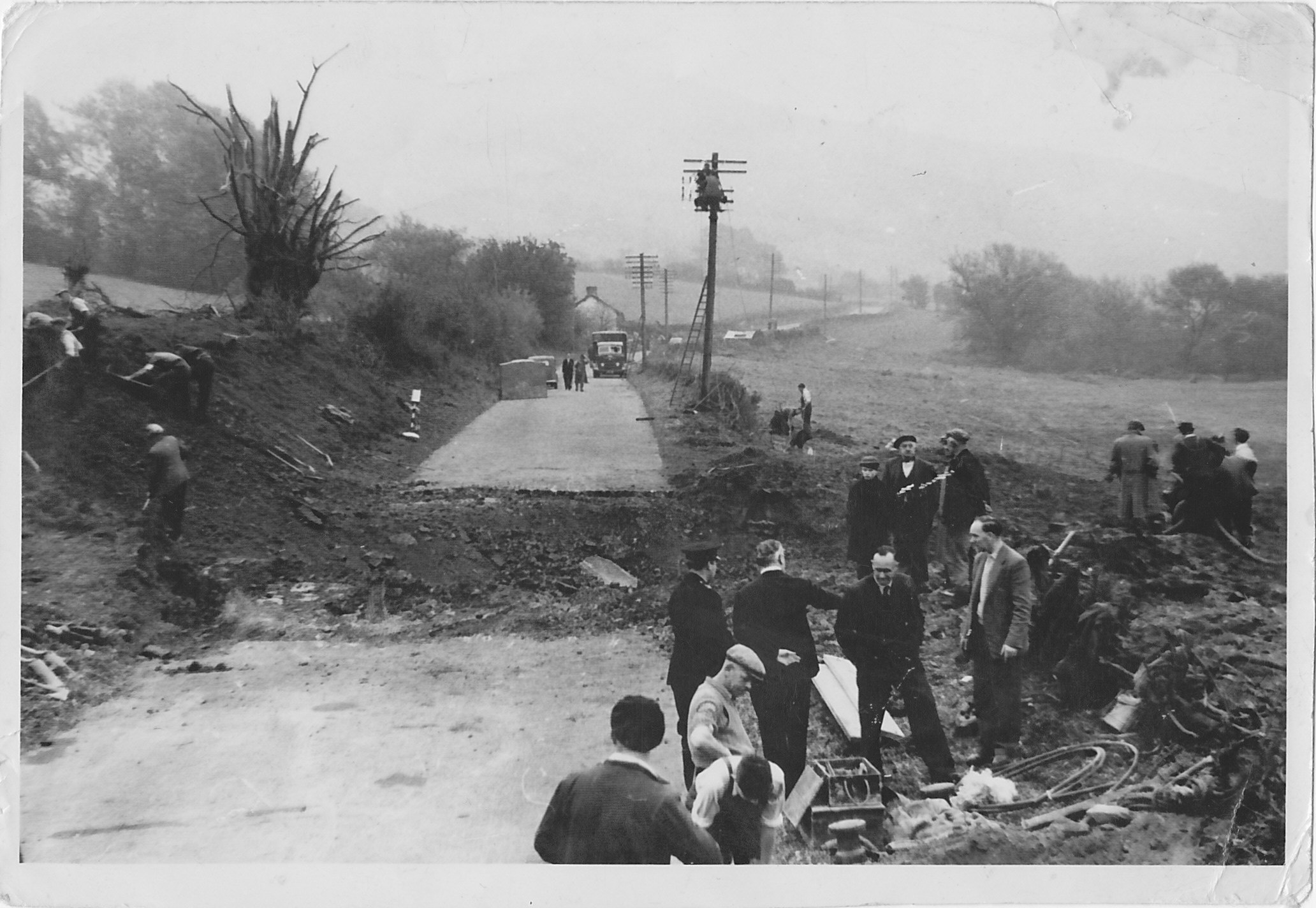
A40 Explosion road damage 1957
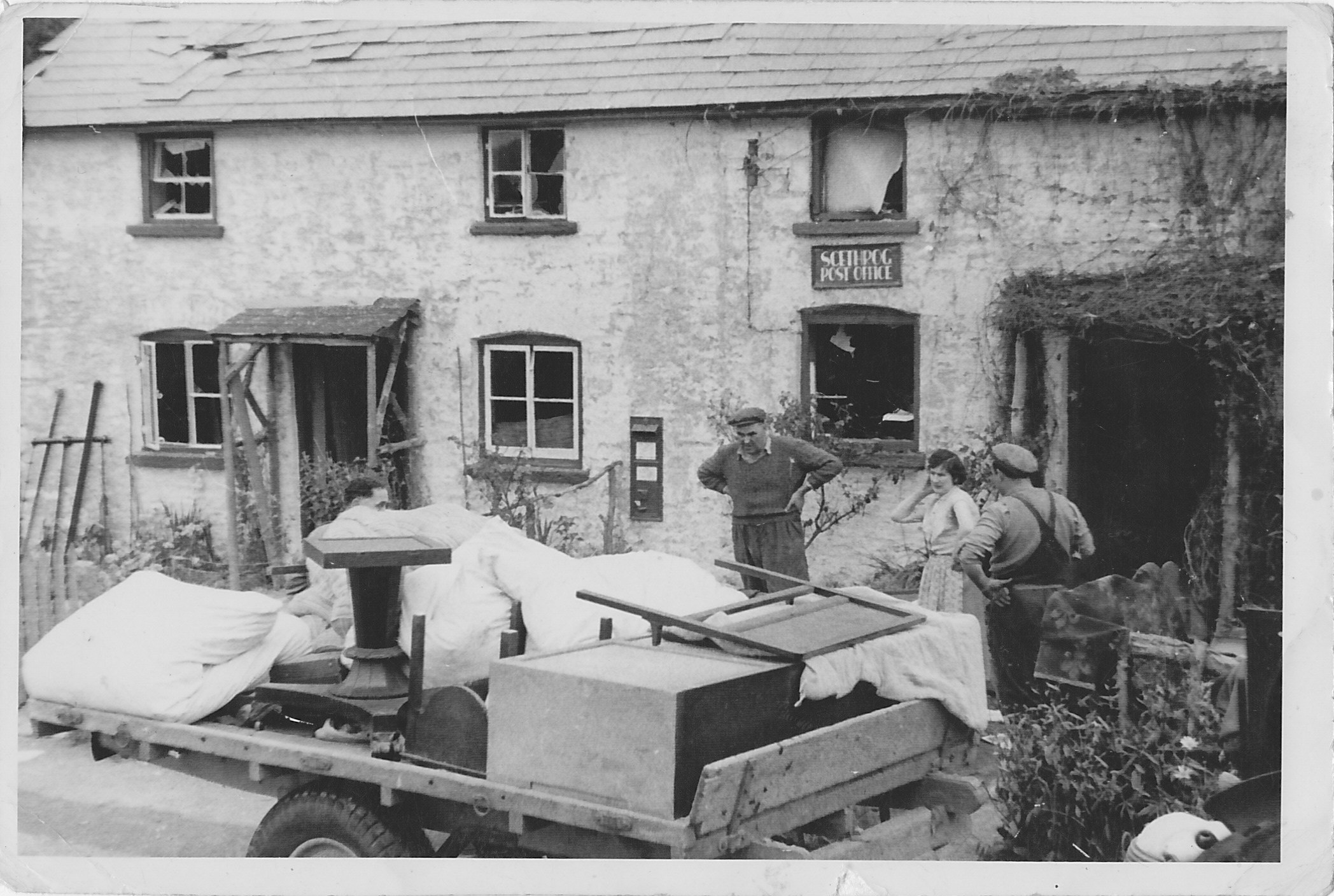
A40 Explosion damage to Scethrog post office with Mrs Butcher a tenant of part of the building. Fortunately Miss Florence Clarke the post mistress was away that night.
LLANSANTFFRAED
The main settlement is a farm and three dwellings on the A40 adjacent to the church above the junction to Talybont. Prominent buildings nearby are Newton Farm , Llansantffraed House, the Old Rectory and Buckland Hall.
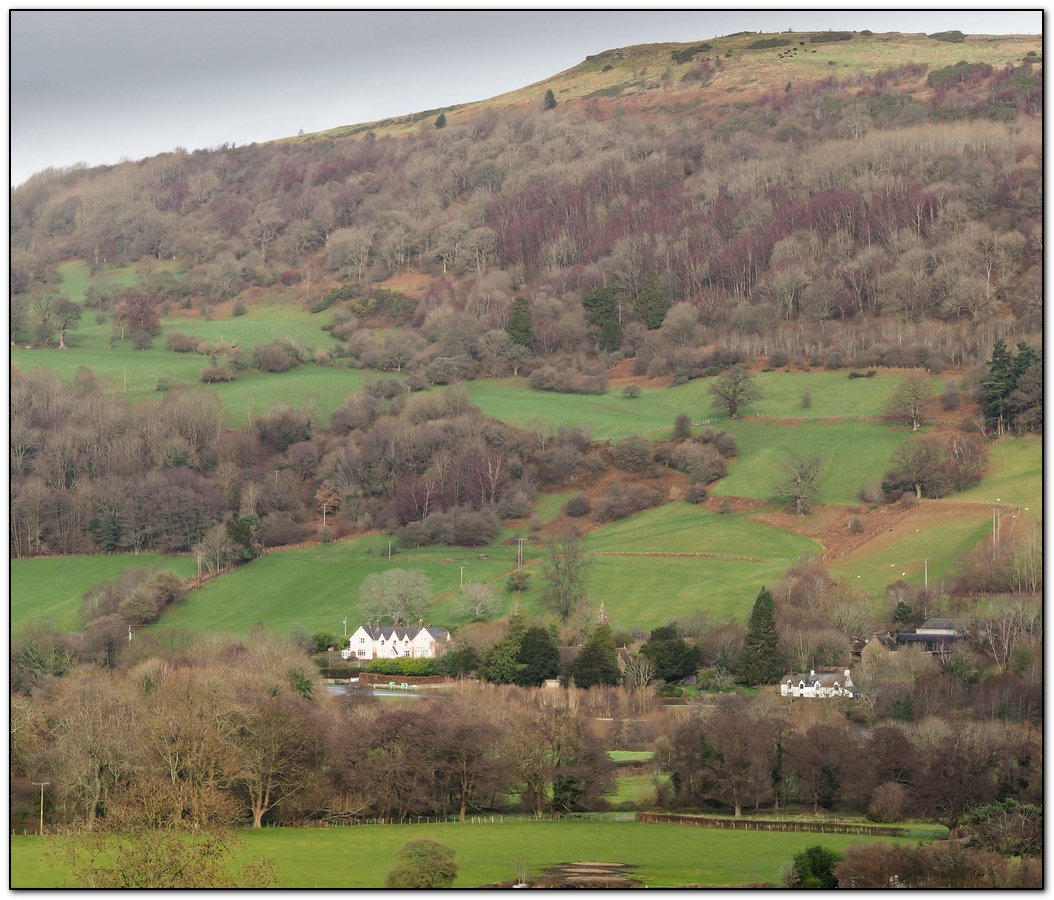
Llansantffread
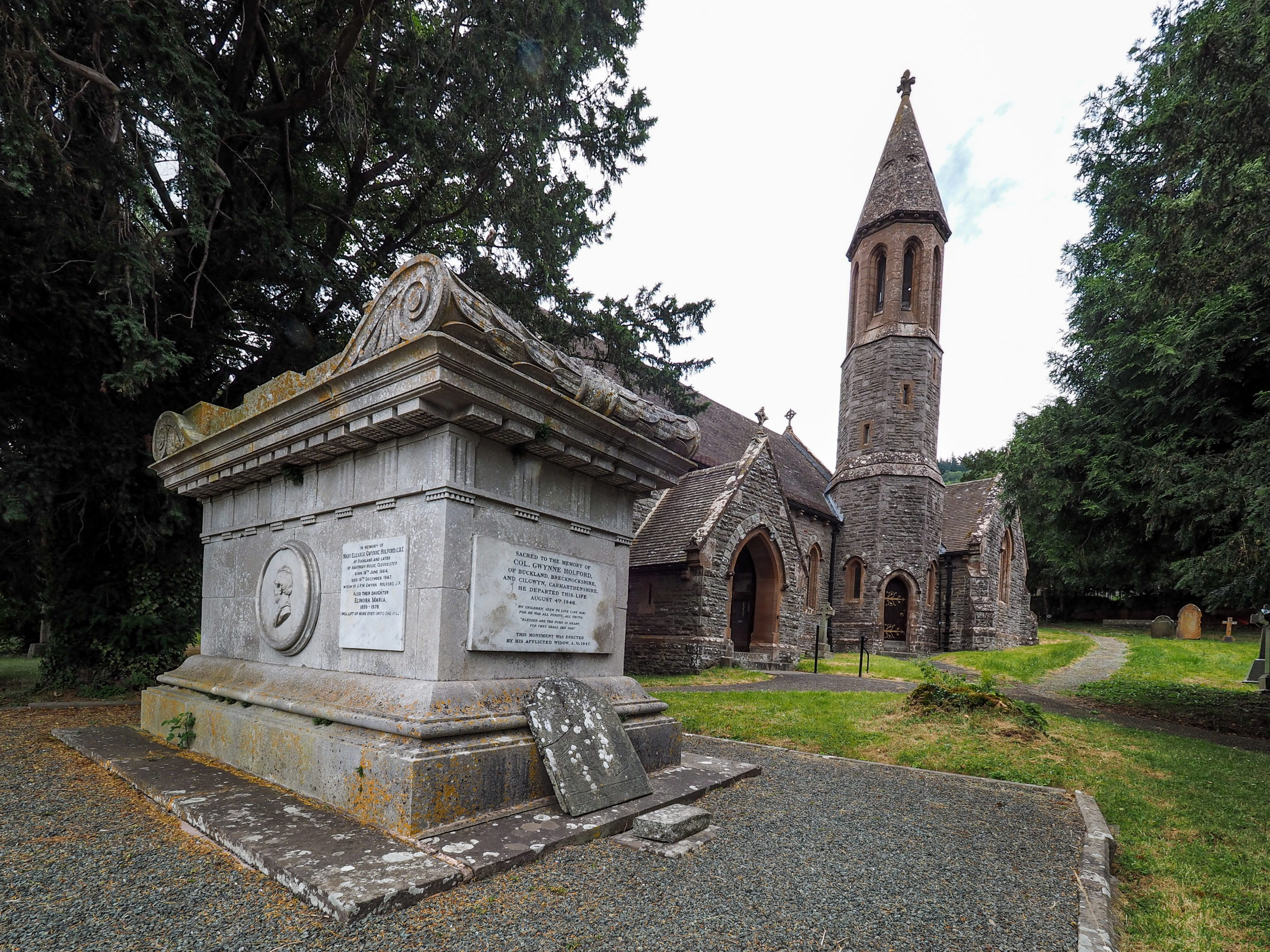
Holford Tomb at Llansantffraed church
HENRY VAUGHAN
This celebrated metaphysical poet and physician lived from 1621 to 1695 when his remains were buried in Llansantffraed church. He, with his twin brother Thomas, spent much of his life in this area living at Newton Farm deriving much of his inspiration from the surrounding countryside. In his name a 4 km walk with interactive swing posts bearing excerpts of his poetry has been created at Talybont, with a memorial physic garden and tranquil picnic site just off the start of the Brinore Tramroad in the village.
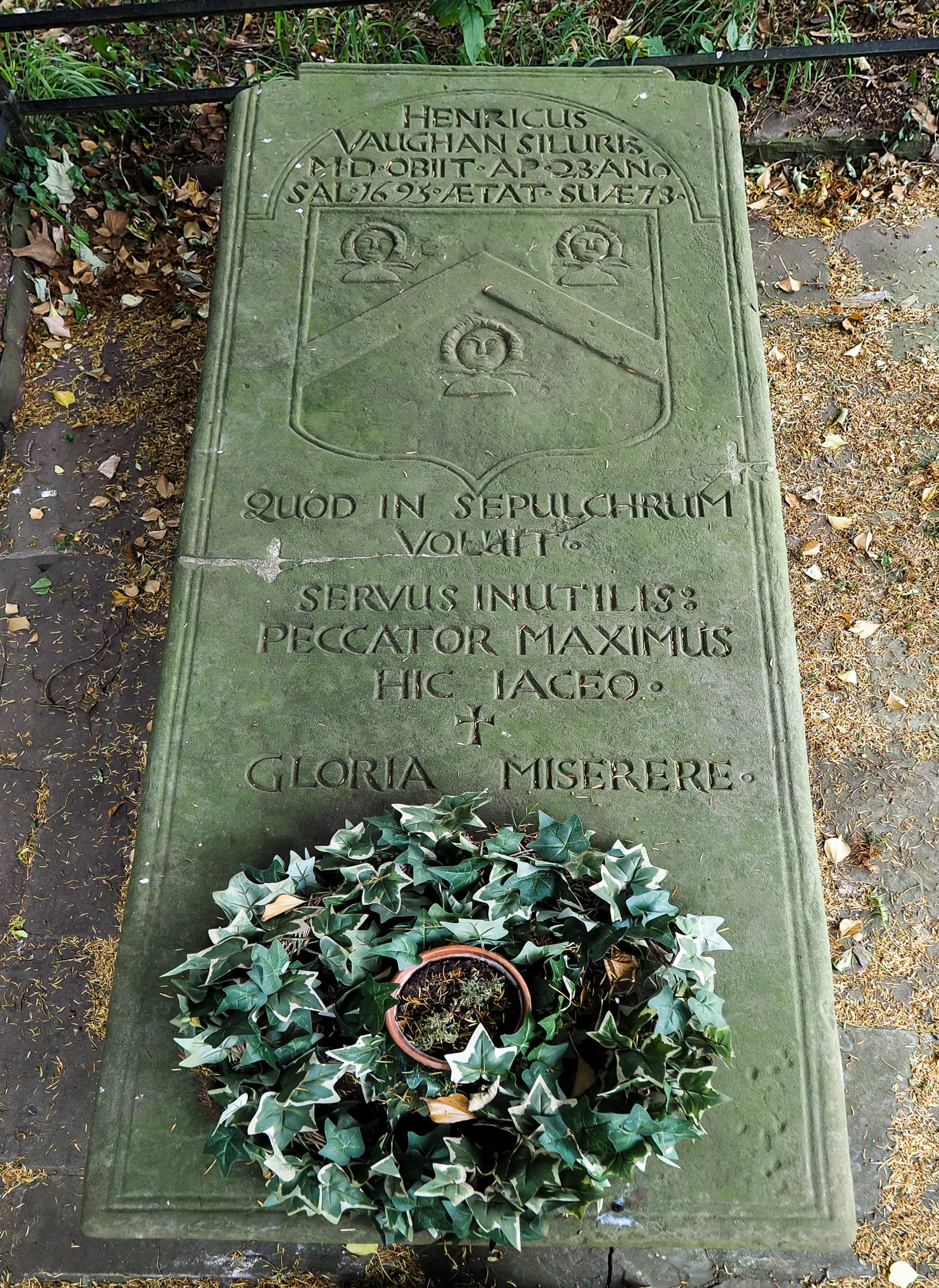
Henry Vaughan grave at Llansantffraed church
BUCKLAND
The house and estate was first listed as a Jacobean manor during the 1600’s and was rebuilt in 1775. The building was remodelled 1836-40 but a disastrous fire resulted in the reconstruction of the current mansion in1898. Notable owners were the Gwynne Holfords who were great benefactors in the locality with James becoming High Sheriff of Breconshire in1857 and an MP between 1870 and 1880. Llansantffread church was entirely rebuilt by the Gwynne Holfords and their family monument is a prominent structure in the graveyard overlooking the A40. After his death in 1916 the estate was eventually sold. In 1922 Buckland was listed as having 2,600 acres of land with many tenanted farm and houses plus four miles of fishing along the Usk. This had been partly purchased by Henry Seymour Berry a highly successful businessman and multimillionaire who was made Lord Buckland of Bwlch in 1926. Apart from hosting lavish events on his estate, which included a golf course and renowned gardens, he gave generously to local projects including Brecon War Memorial Hospital. In 1928 he was killed in a riding accident on the estate.
With the onset of WW2 the War Office appropriated the mansion and grounds and following a very destructive occupation by Canadian troops it became a military hospital. In 1941 the Llewellyn family, who had bought the estate in 1935, returned to find their property in such a state that they sold it to the War Office who in turn passed it onto the British Legion in 1951.The name was changed to Crossfield House and it remained as a care home for ex-servicemen until 1985 when it closed due to dwindling numbers.
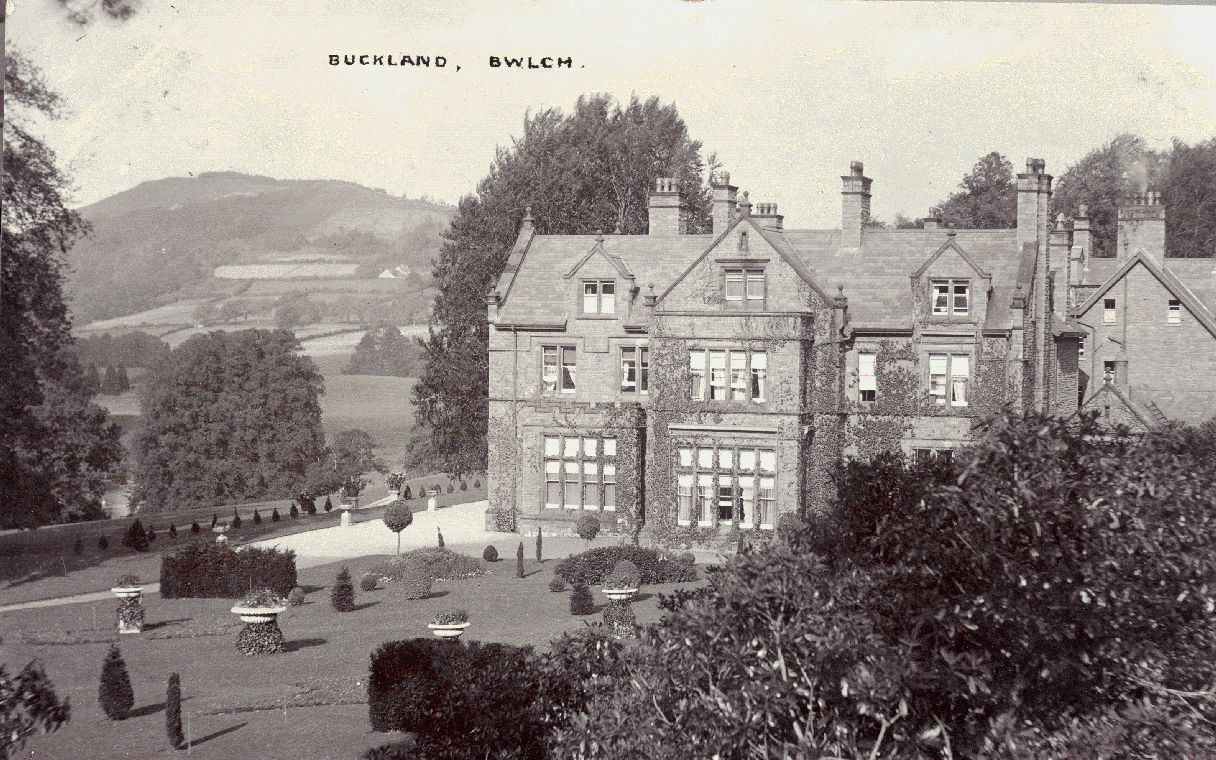
Buckland Hall 1924
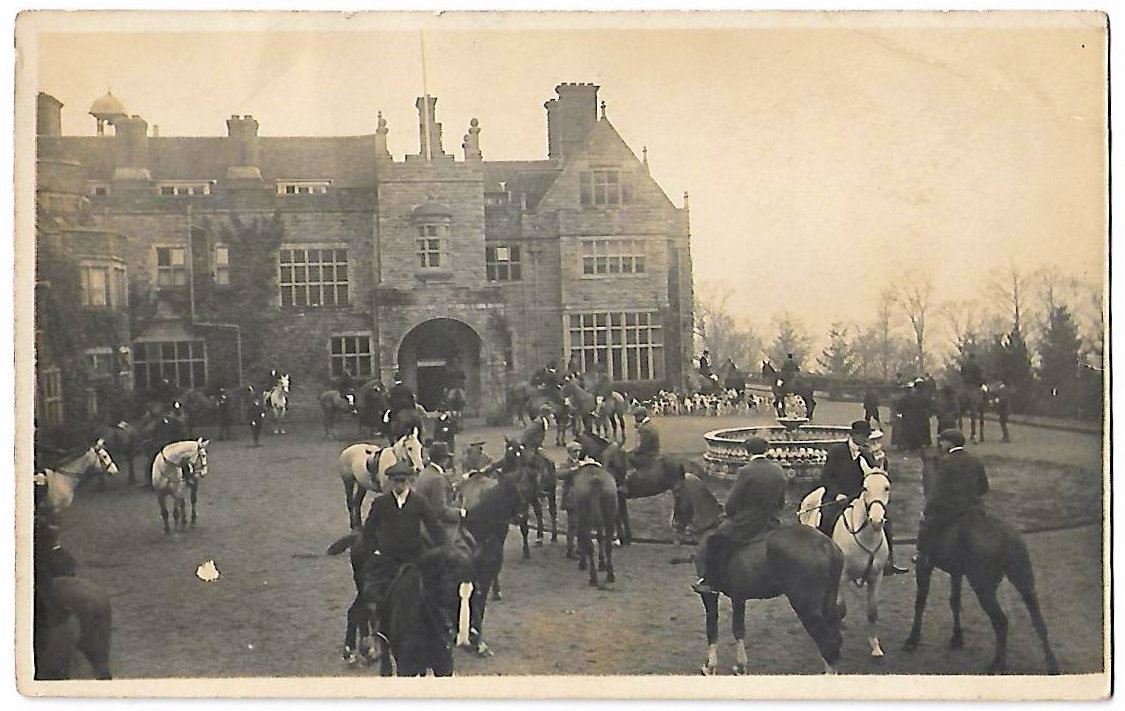
Buckland Hunt 1936
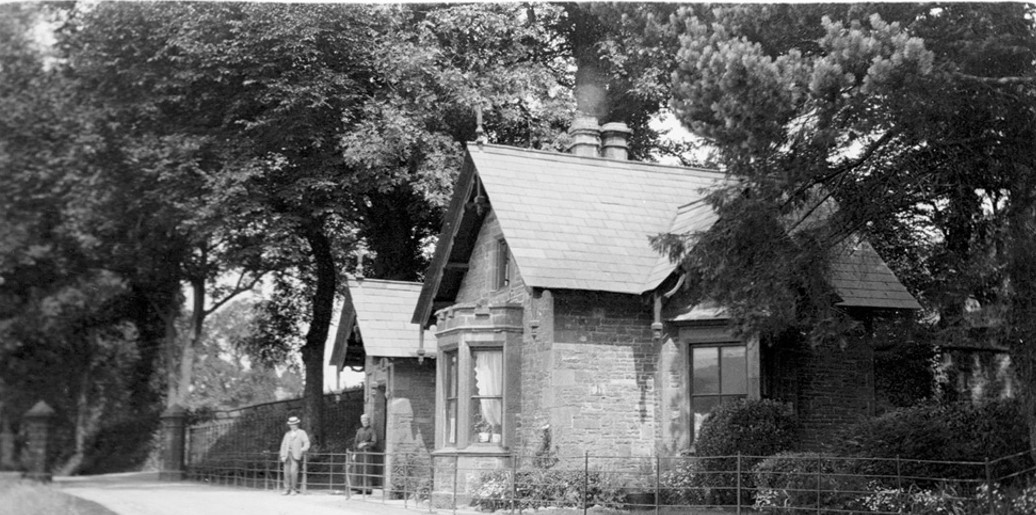
Buckland North Lodge 1926
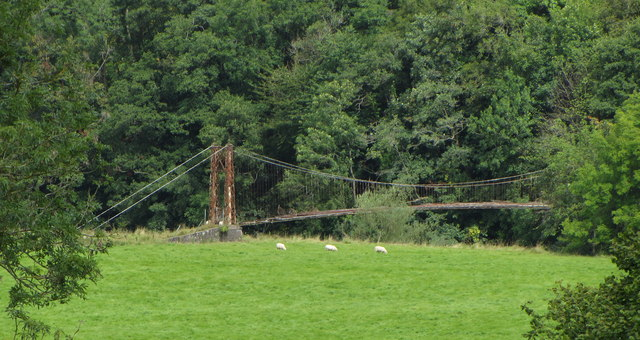
Buckland Hall private suspension bridge for access to Llandetty church now derelict 2016
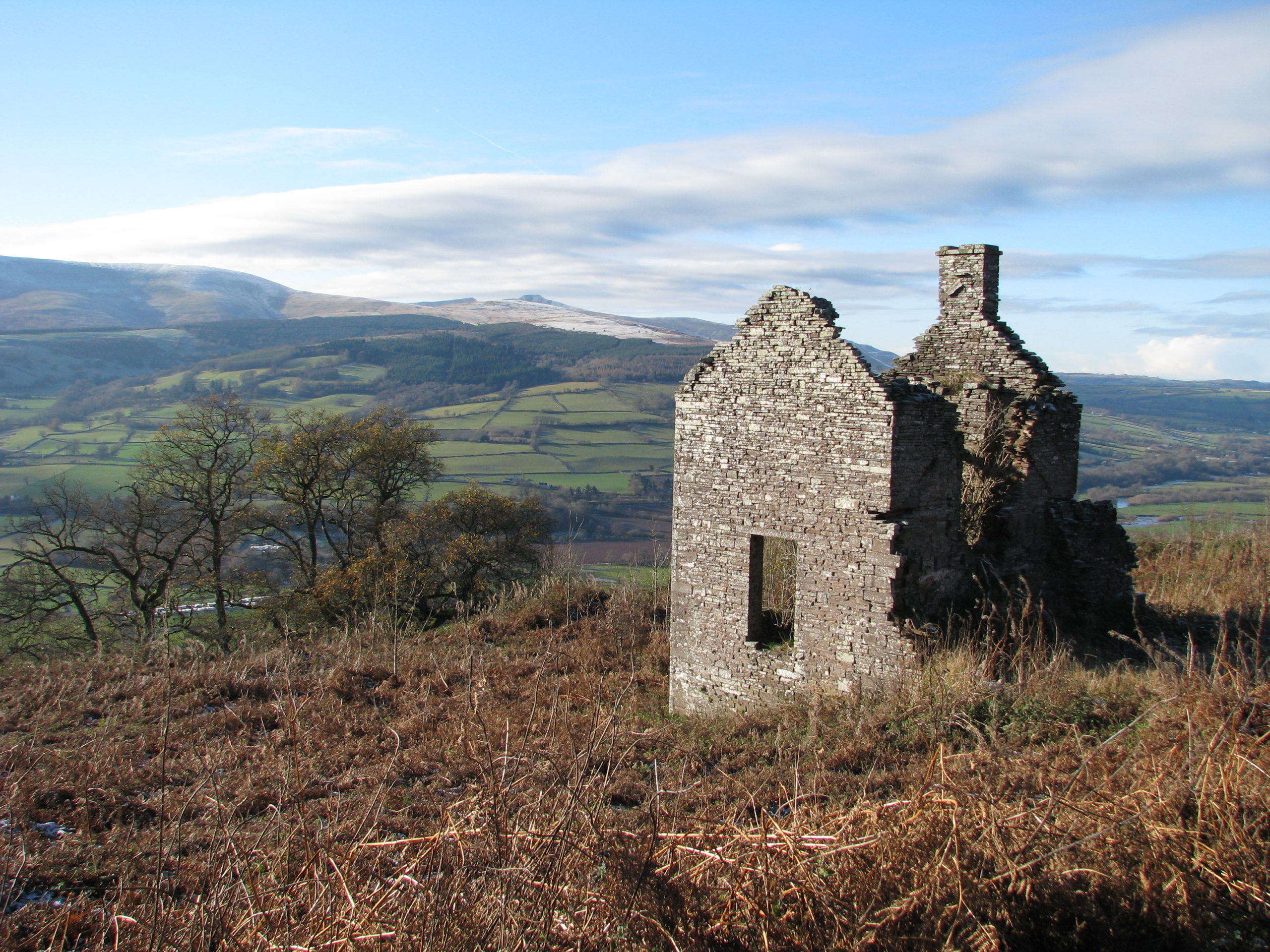
Ruins of the Buckland keeper’s cottage on the Allt 1988
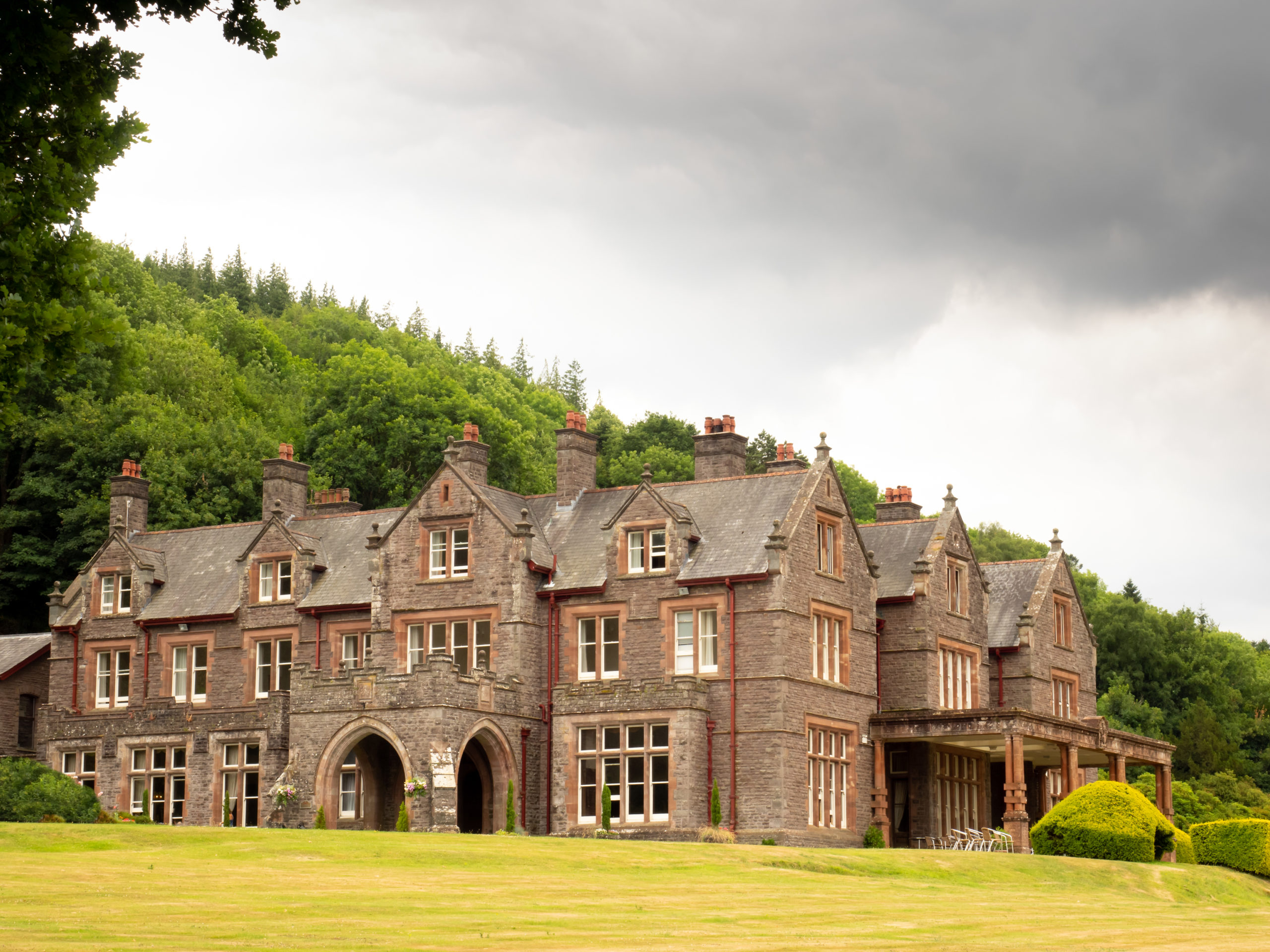
Buckland Hall 2018
BALLOON EPISODE AT BUCKLAND
A Buckland fete was the venue for a popular spectacle involving a woman ascending in a so called smoke balloon,which was just large cotton bag filled with hot air emanating from a fire covered with damp straw, and parachuting back to the launch point. On this occasion Miss Fleet the intrepid entertainer was carried away by a strong wind with dramatic results.
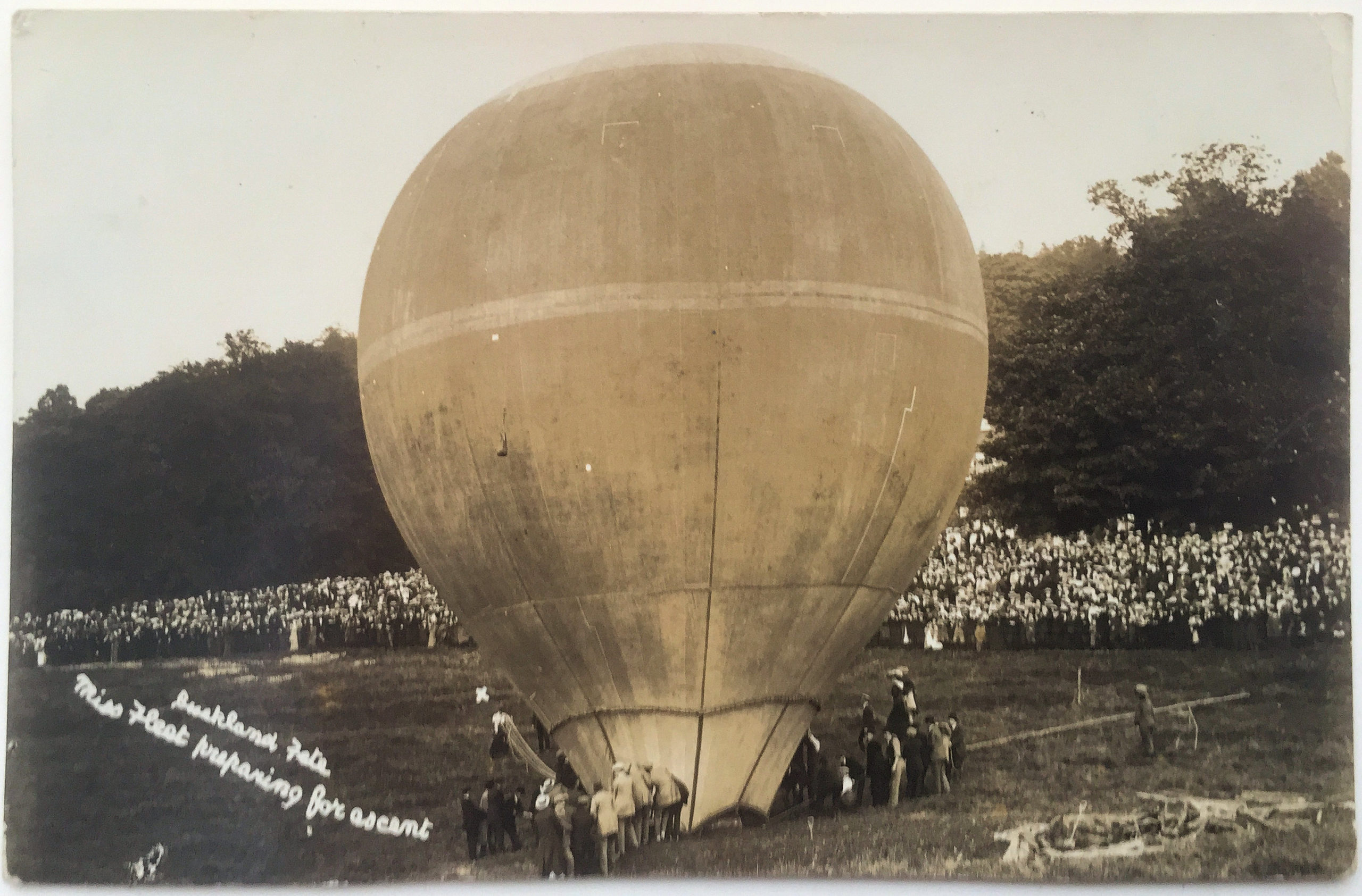
Buckland fete balloon 1911
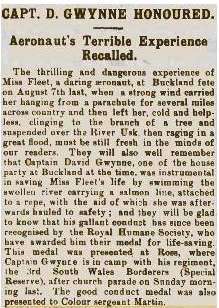
Rescue of Miss Fleet after balloon escapade
ABER
The hamlet is a small collection of dwellings situated three kilometres south of Talybont on the unclassified road that passes the reservoir and becomes a scenic route to Merthyr Tydfil. It once had two shops, carpenter’s workshop, a shoemaker and a smithy. They gradually declined and the completion of the reservoir led to the closure of the last remaining shop in1948. Aber Congregational chapel dating from 1762 remains in use. The Tiratanaloka Buddhist retreat and training centre for women is established at the former Aberclydach House. Out of 15 dwellings in the hamlet 9 are second homes.
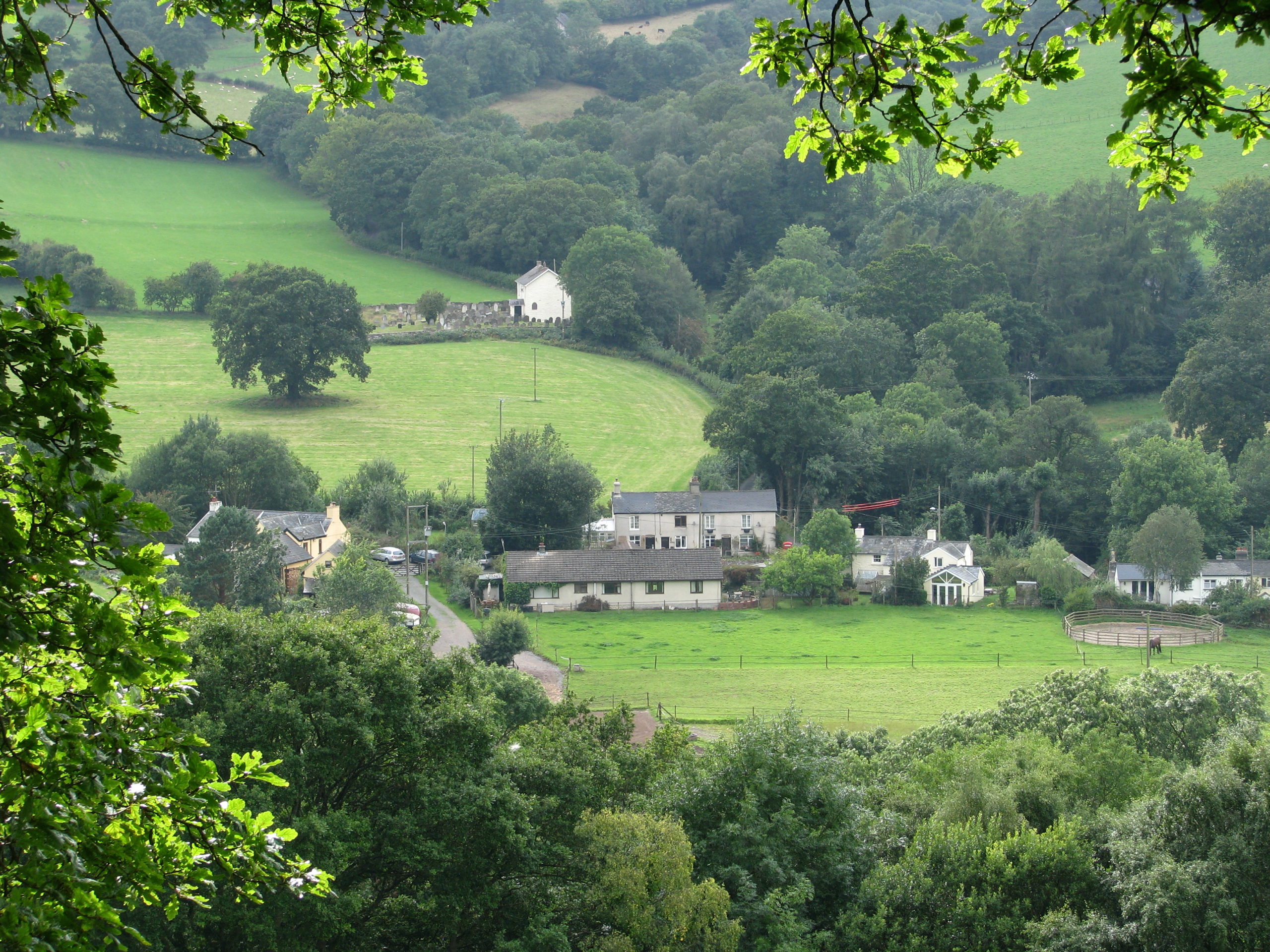
Aber village from the tramroad
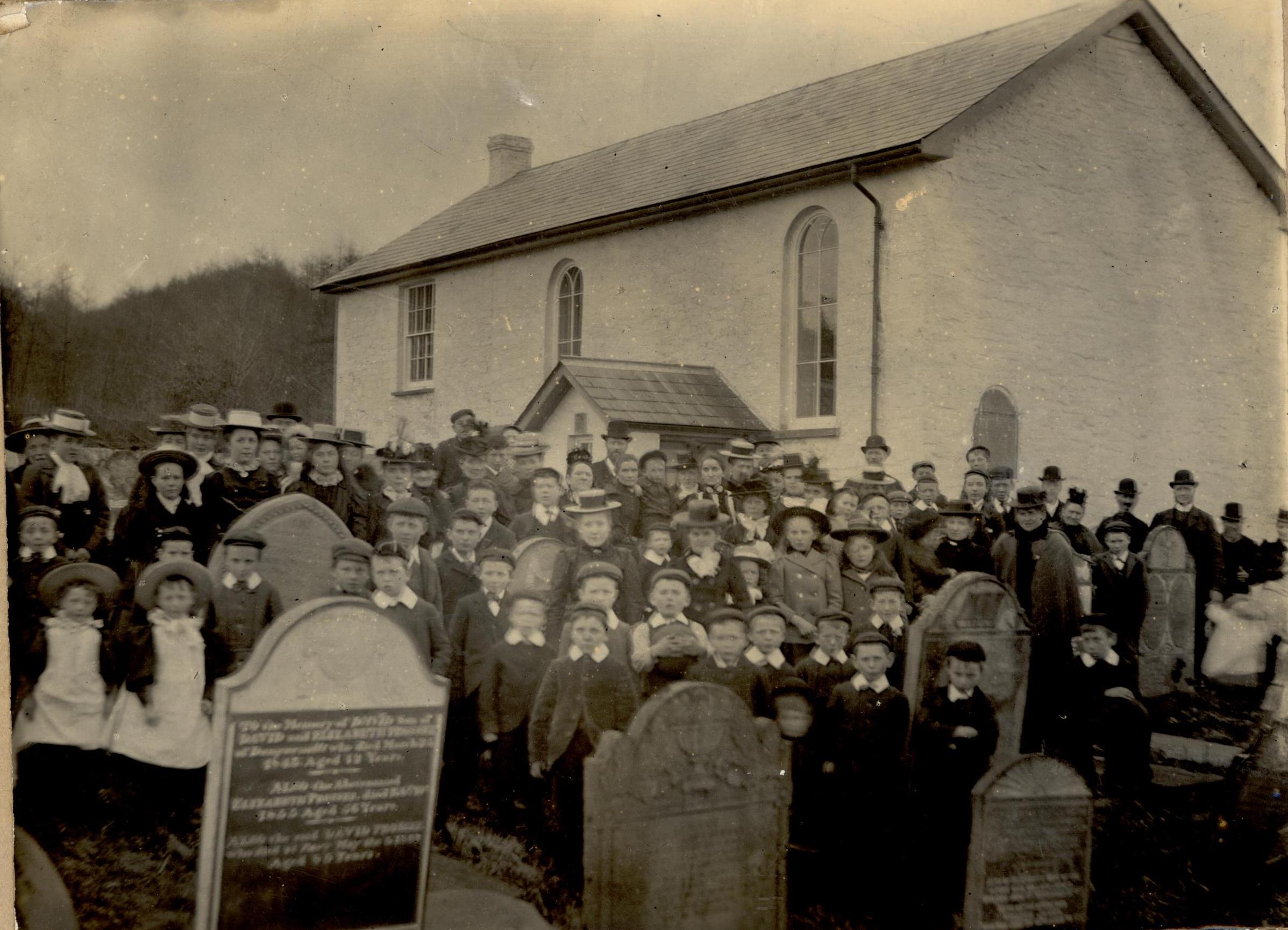
Combined Aber and Benaiah chapels event around 1900
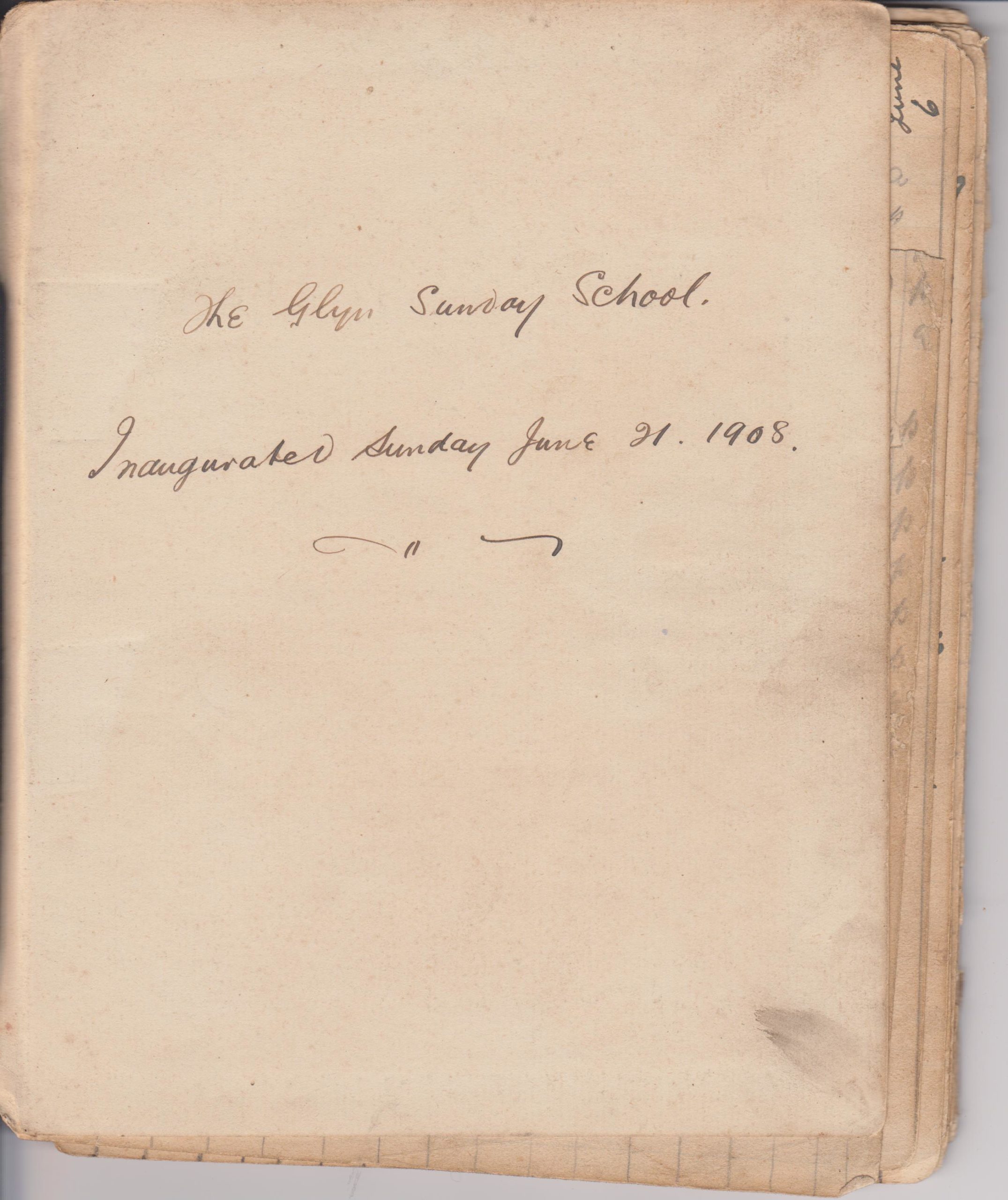
Aber Sunday School 1908
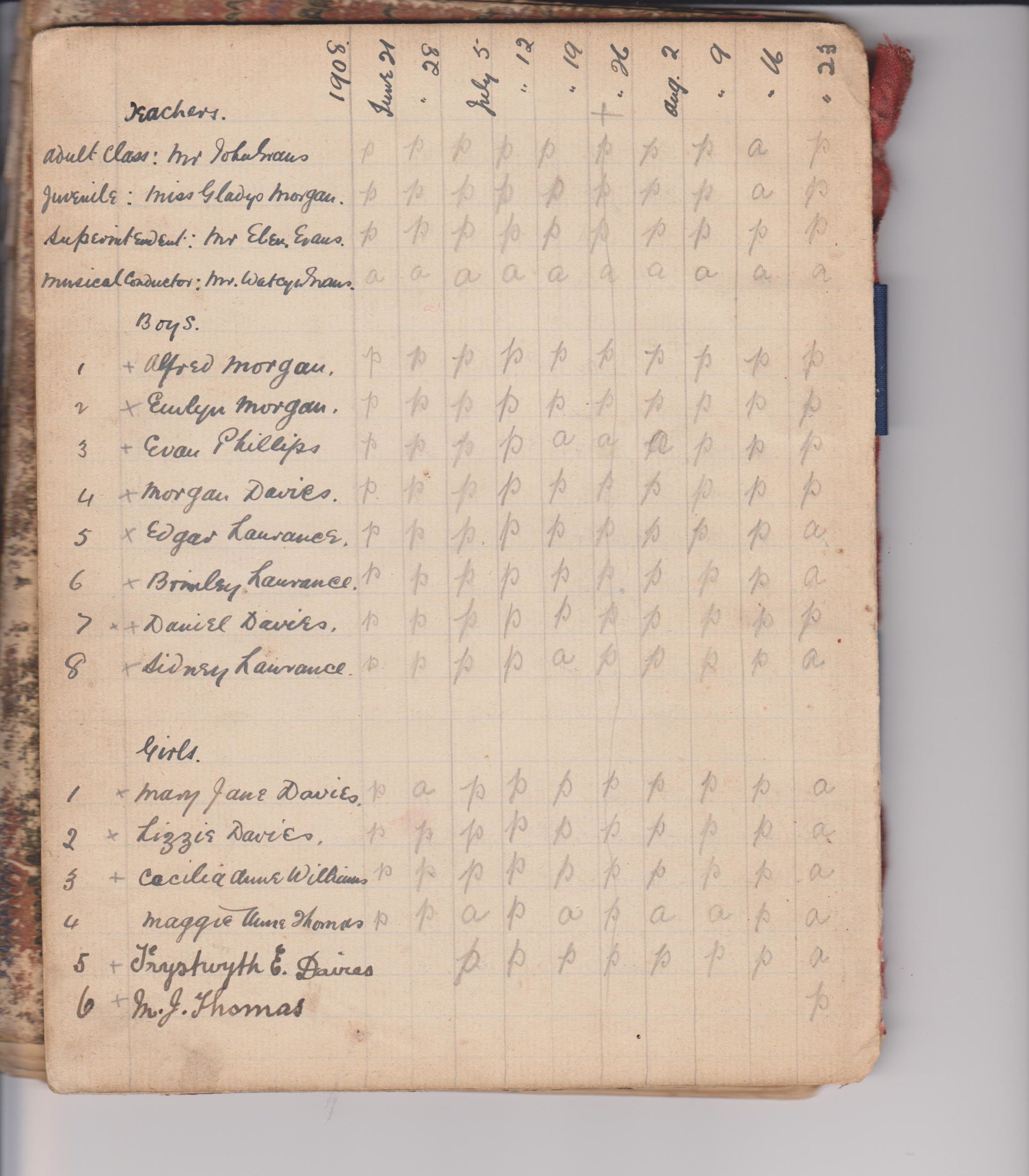
Aber sunday school register 1908
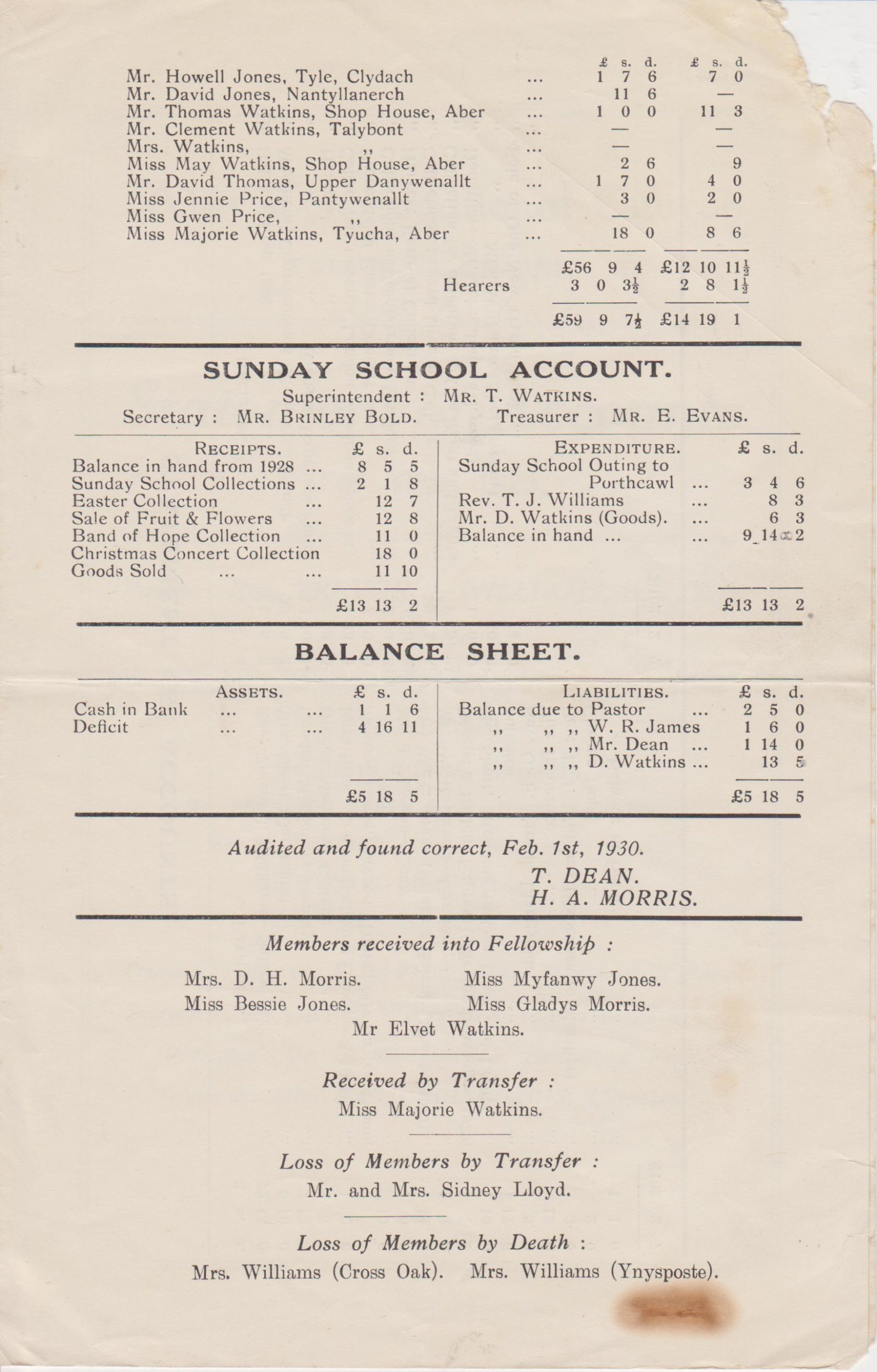
Aber Sunday School Accounts 1930
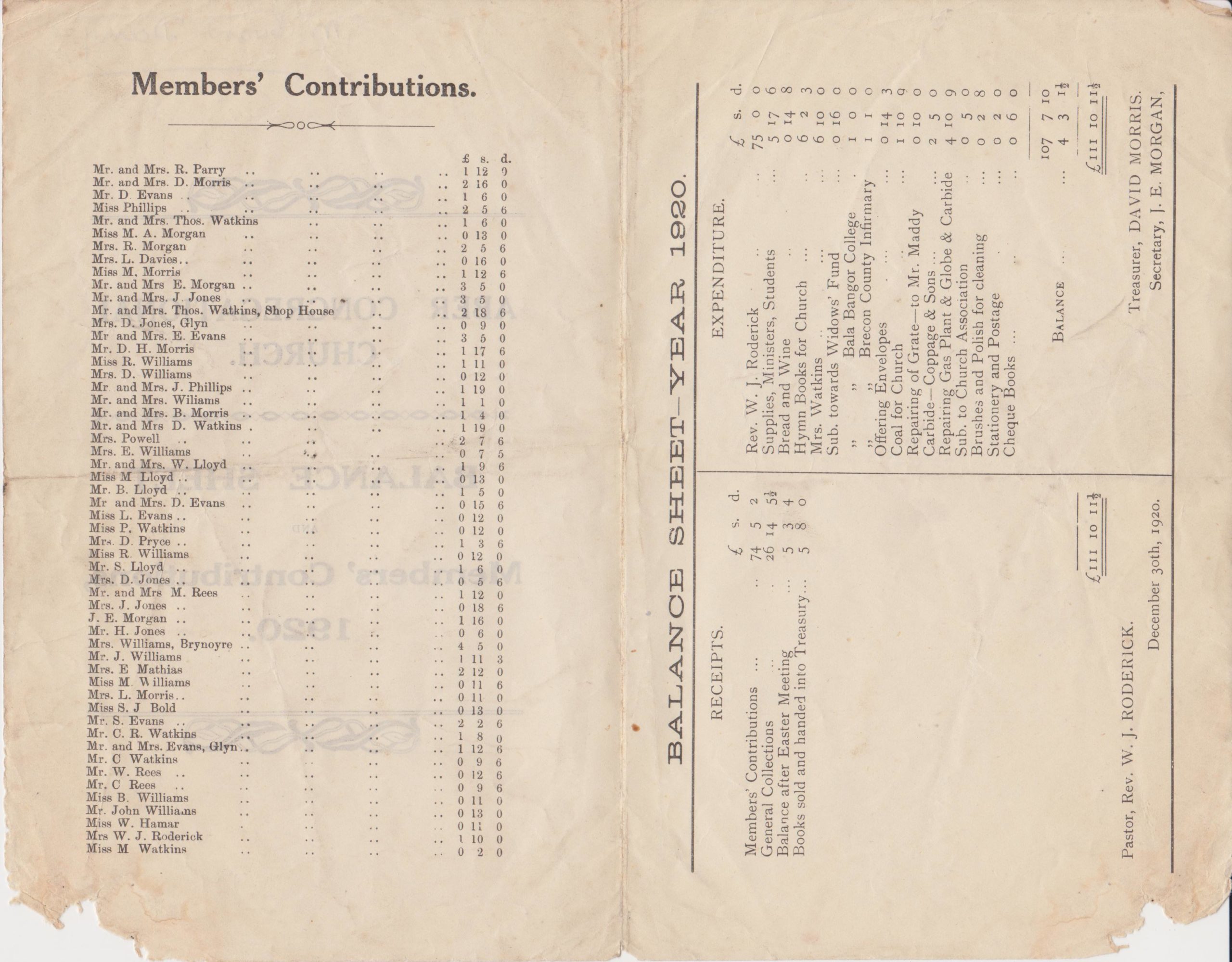
Aber Chapel Accounts 1920
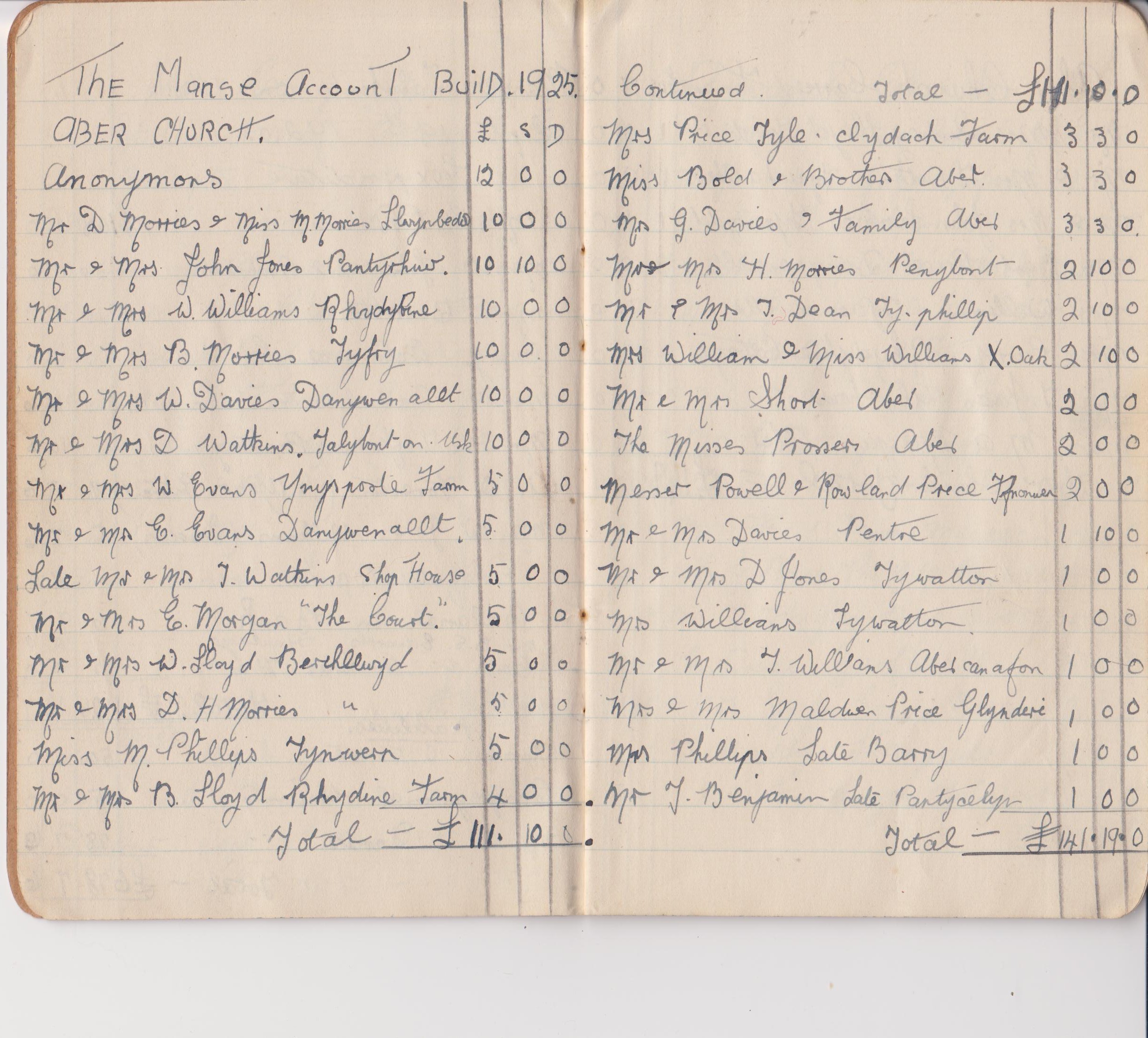
Aber Chapel Donations for building the manse 1925
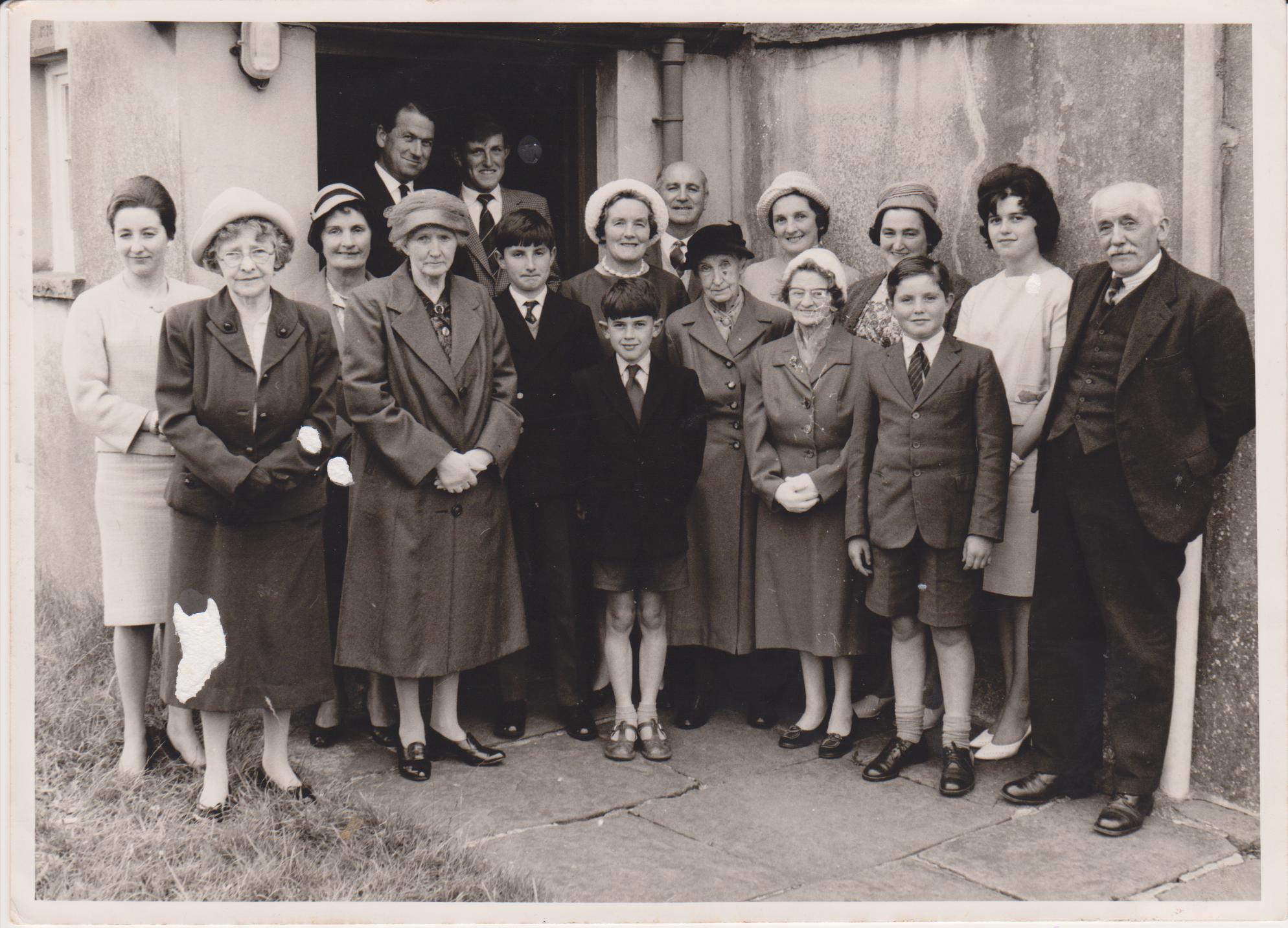
Aber Chapel 200th Anniversary 1962
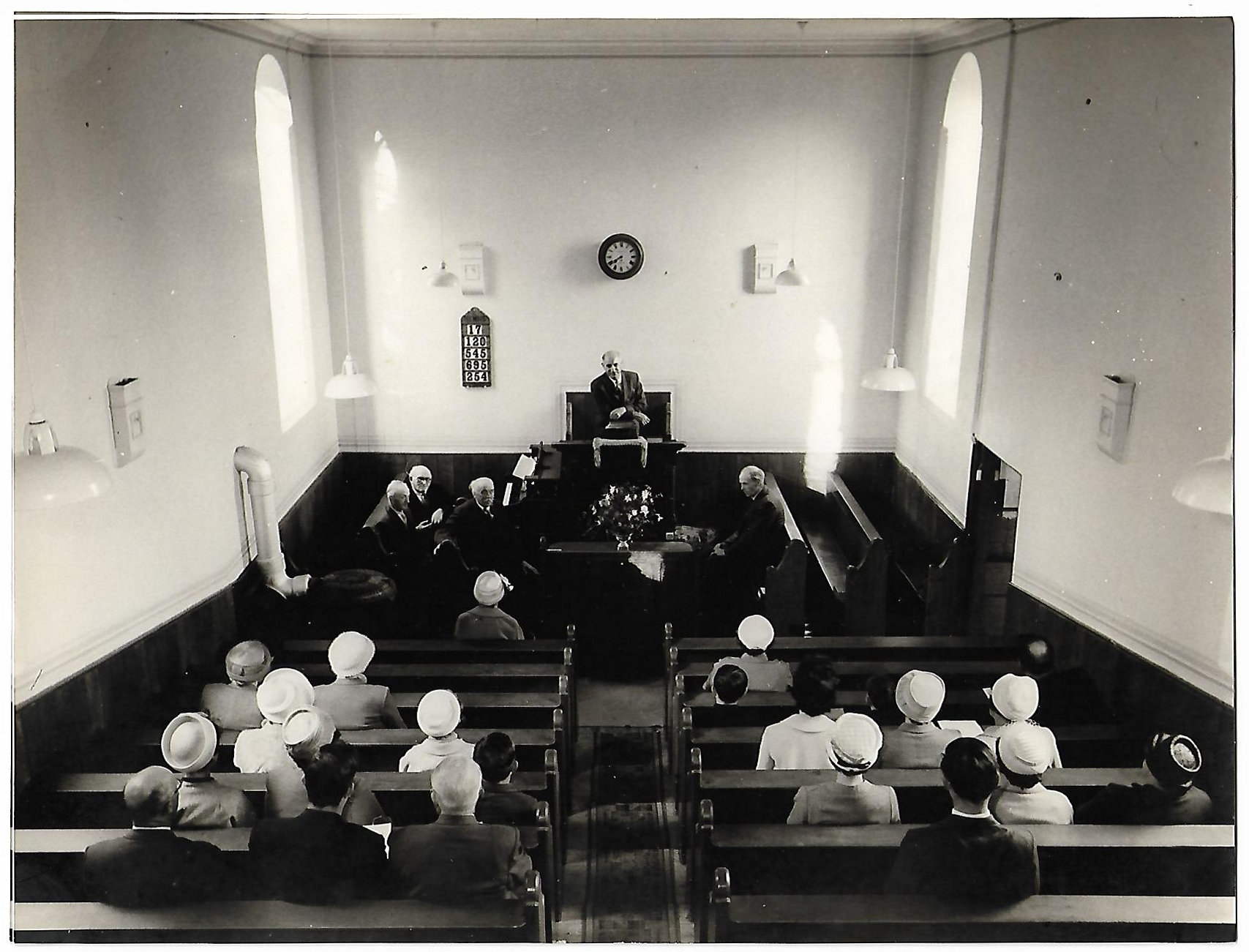
Aber Chapel interior with Huw Powell 1962
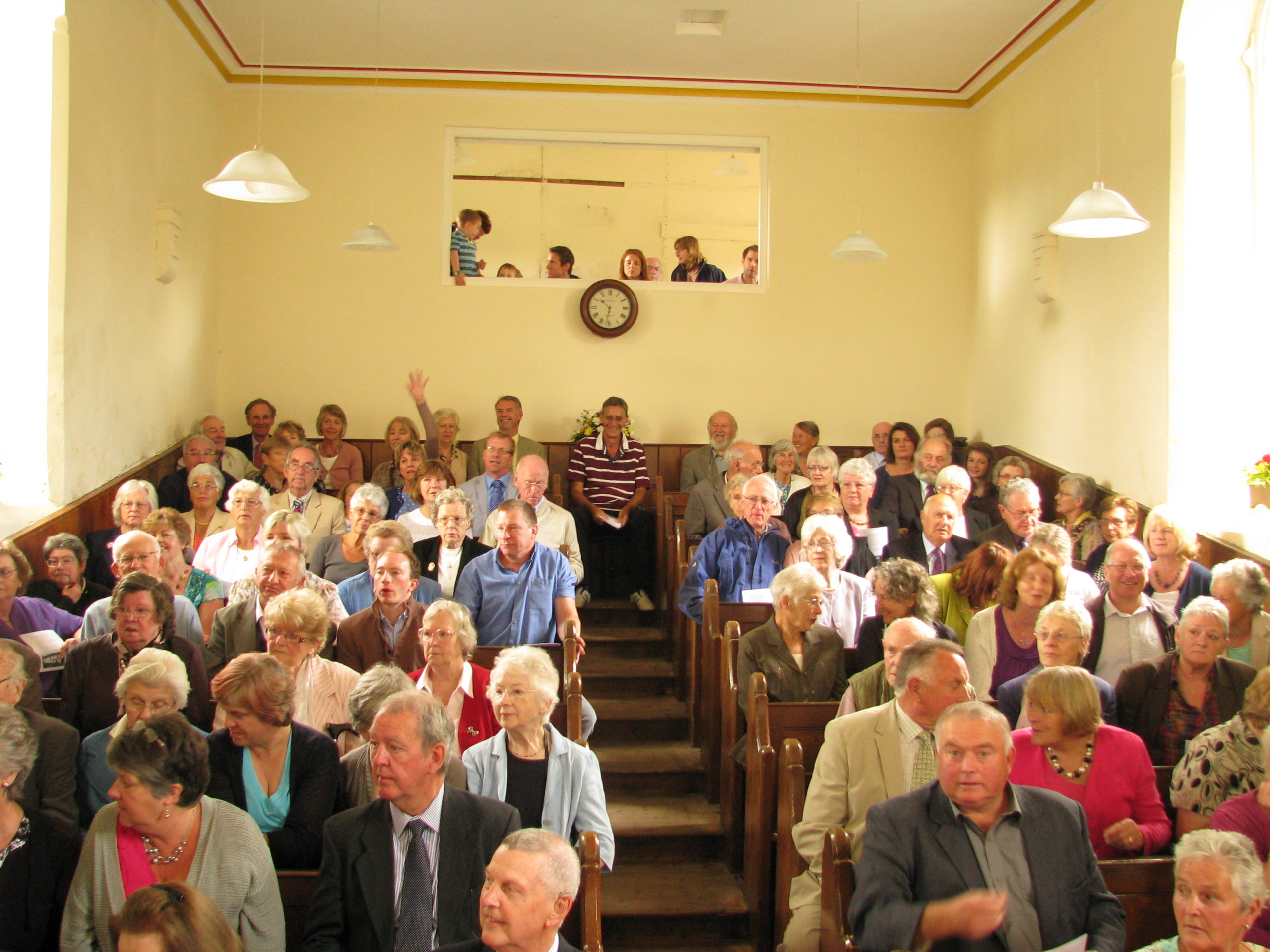
Aber Chapel 250th Anniversary 2012
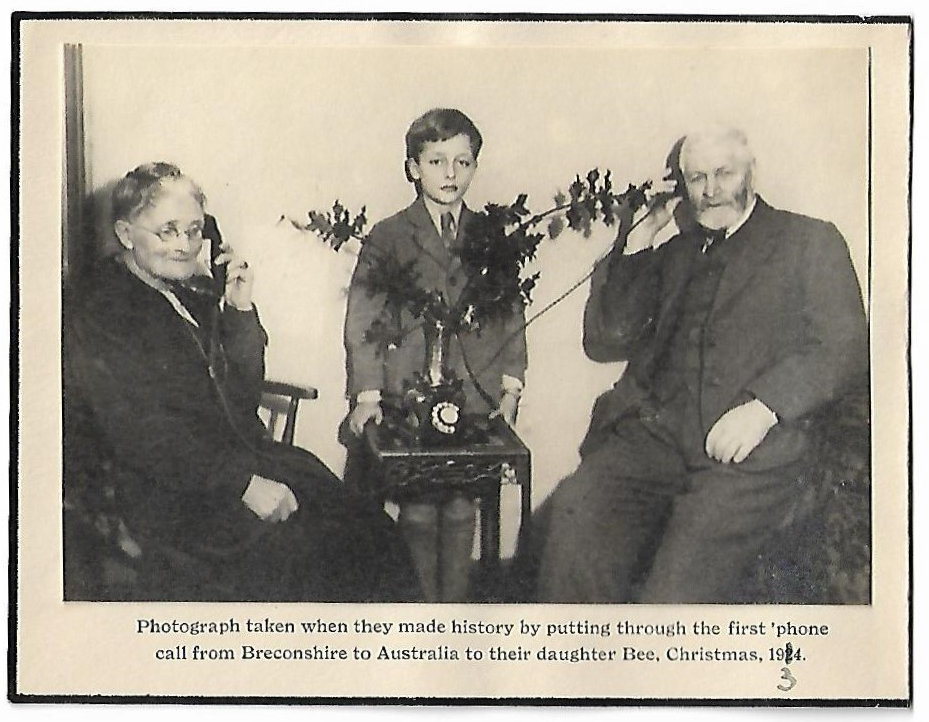
The first telephone call to Ausralia from Breconshire 1934 by the Price’s of Aber Farm
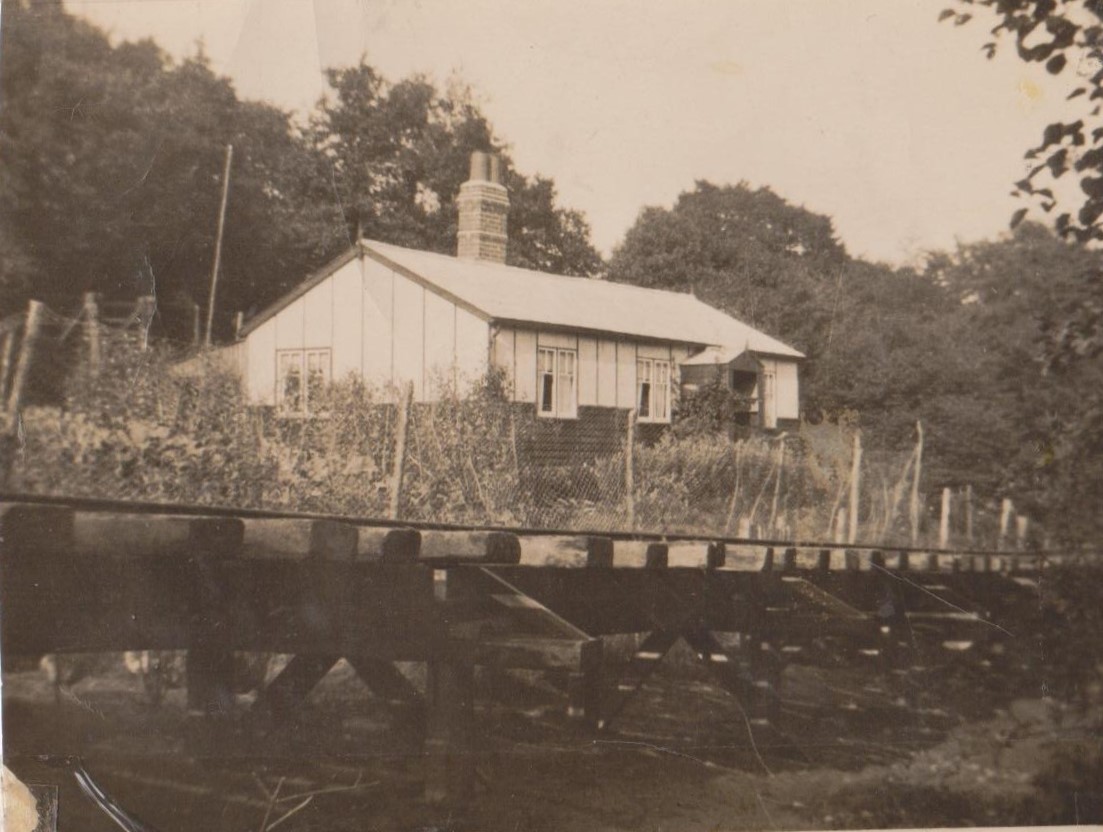
Glanclydach with railway from the reservior quarry at Aber on trestles 1936
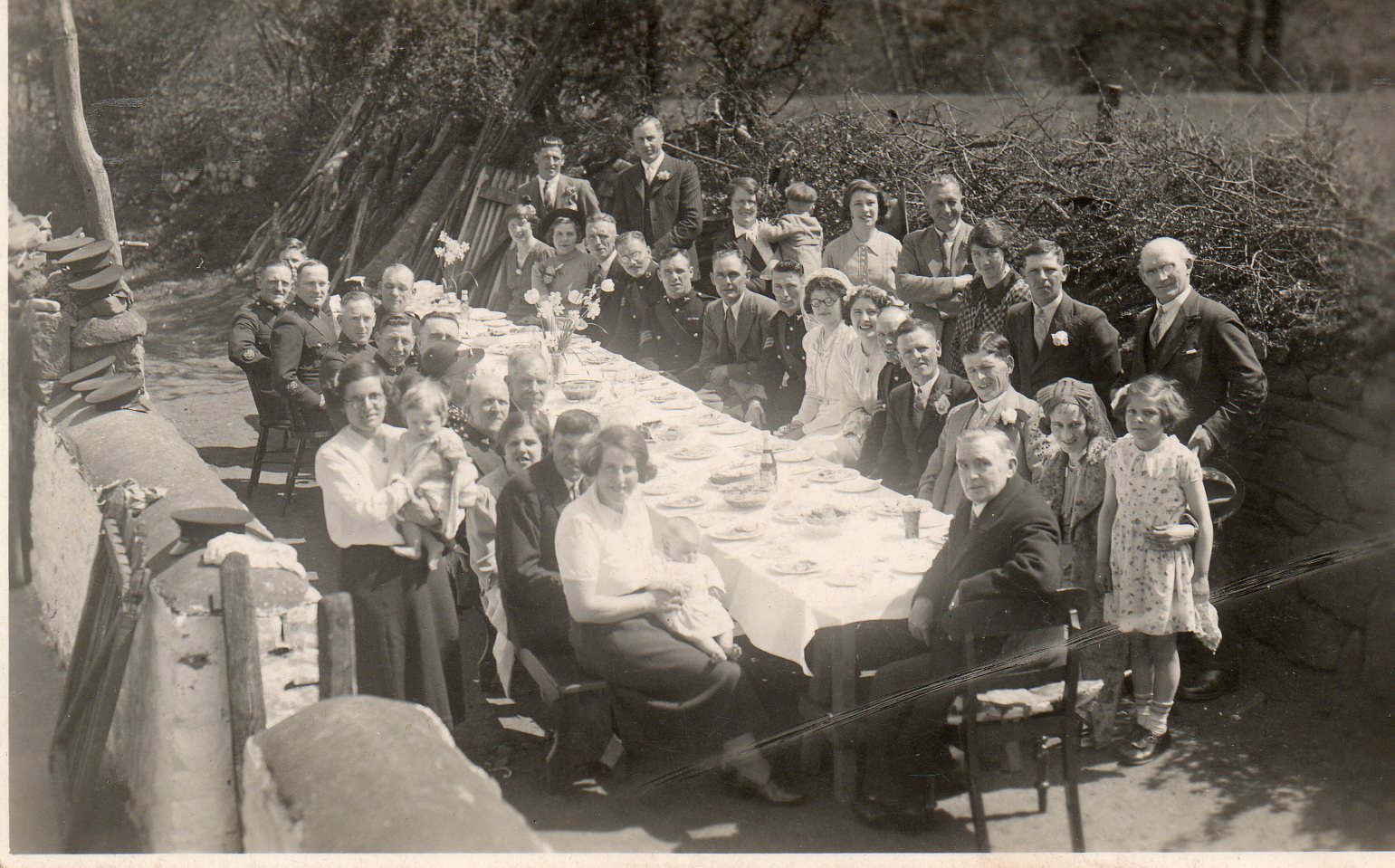
Doris & Chris Curtis’s wedding reception at Ty Watton Aber 1939
PENCELLI
The village grew up around the castle dating back to 11th century whose turbulent past ended with gradual decay in the 14th century. It straddles the B4558 which was a main thoroughfare before the A40 existed, and the adjacent ford across the Usk made it an important crossing point. The canal brought trade plus goods for the shop and the Royal Oak pub which still trades successfully. With farming, the Castle camp site and Plas Pencelli Outdoor Persuits Centre are buoyant businesses.
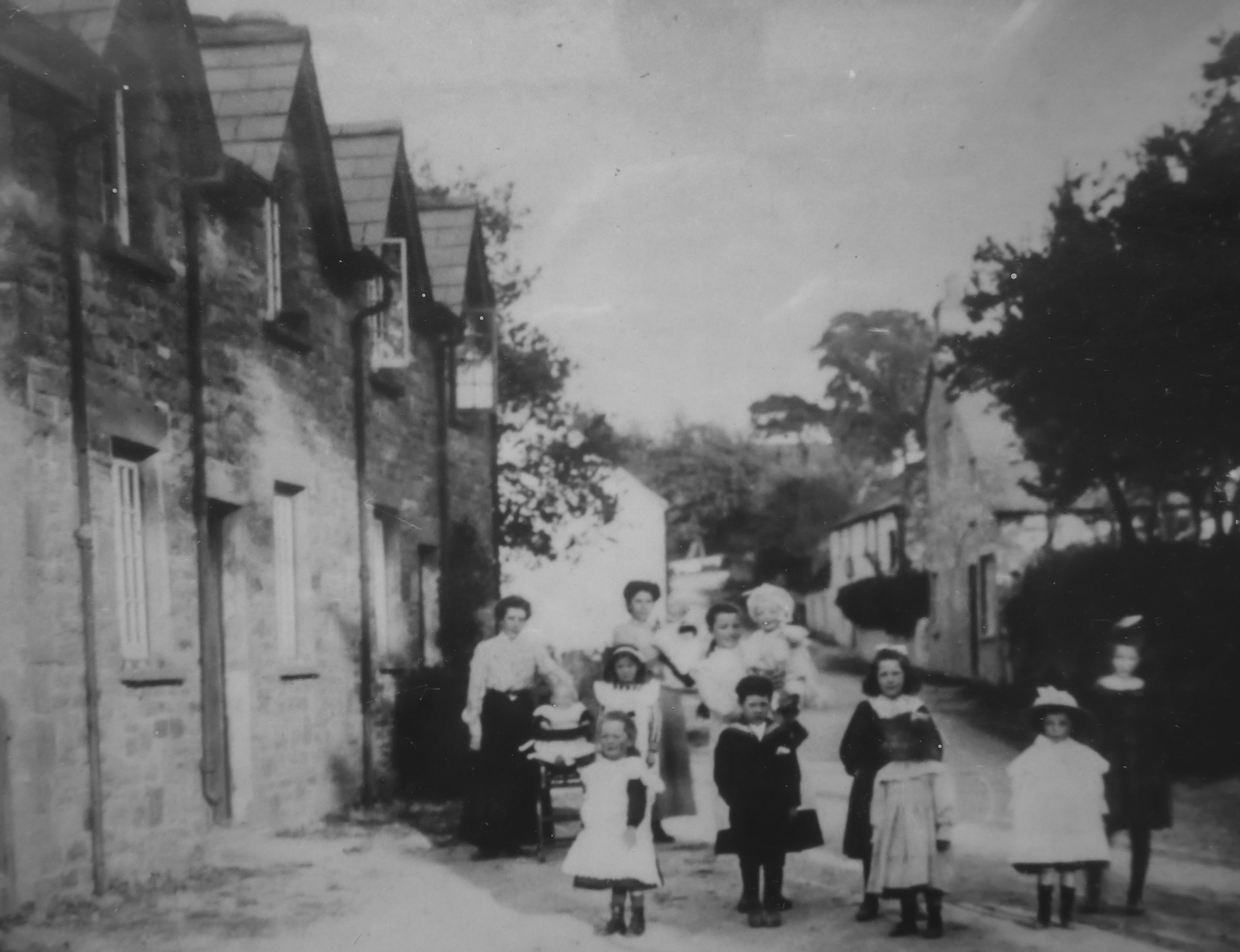
Pencelli street scene with the Royal Oak in the background 1890’s
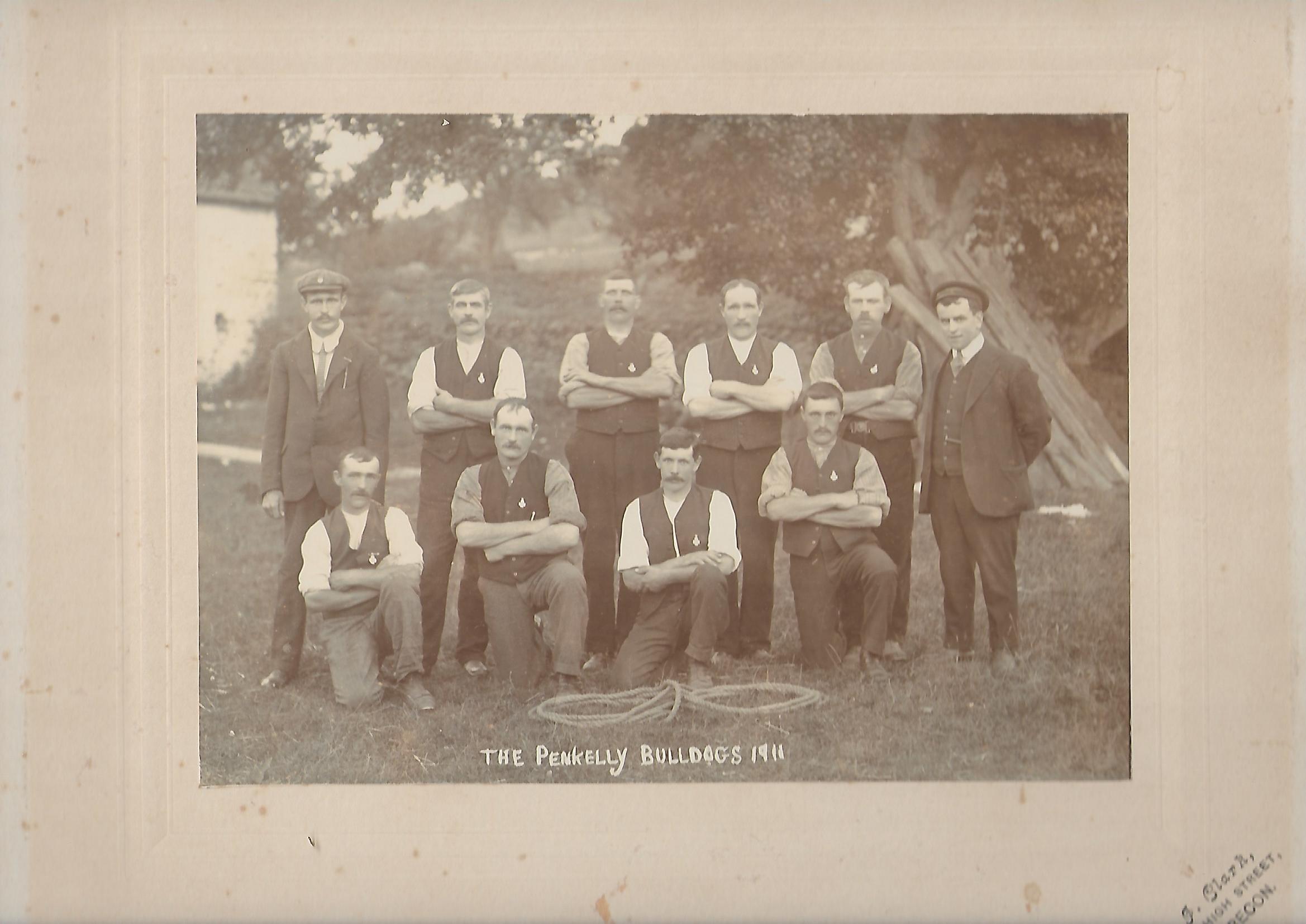
Pencelli Bulldogs Tug-of-War team
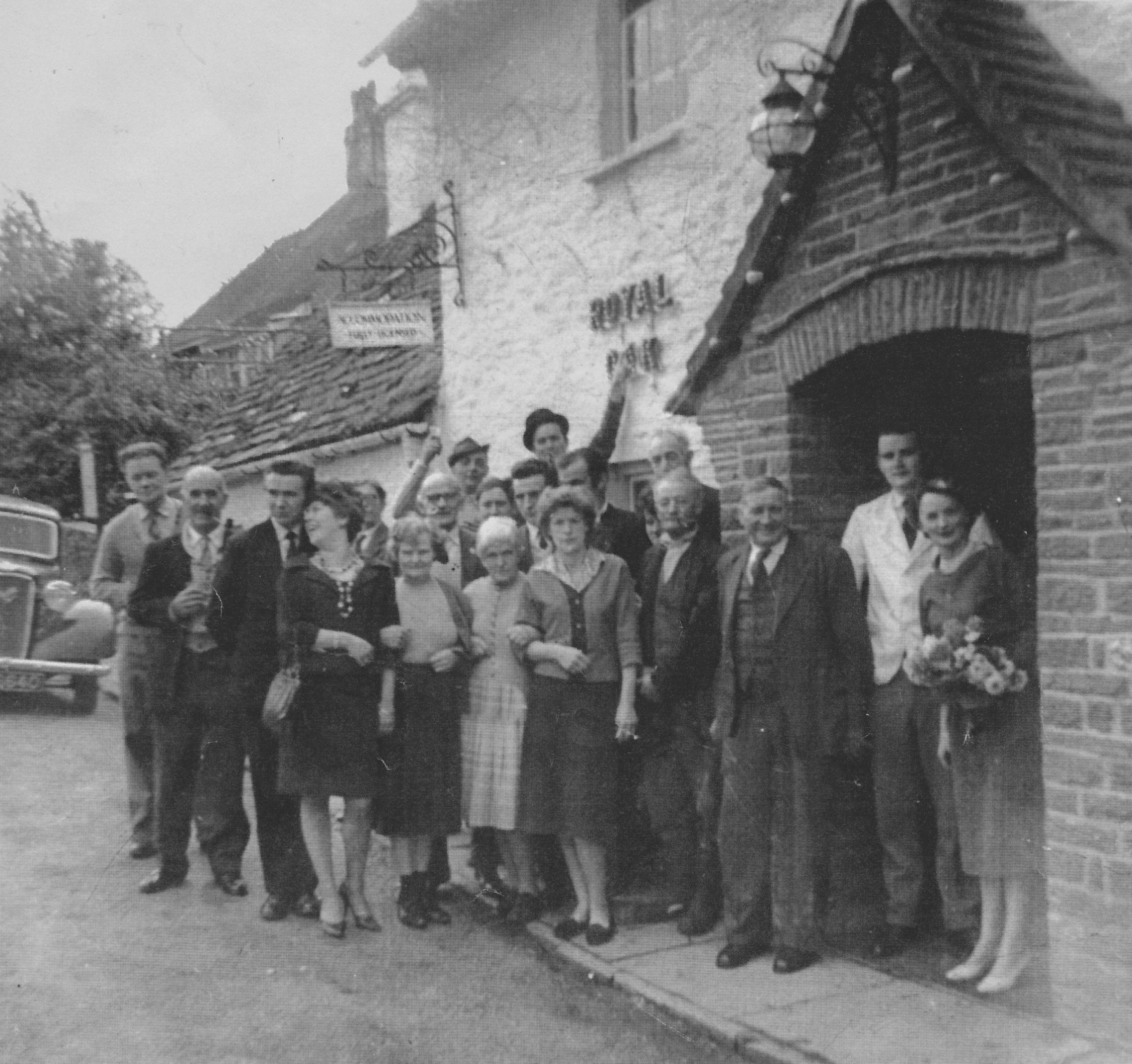
The first Sunday opening at the Royal Oak Pencelli 1961
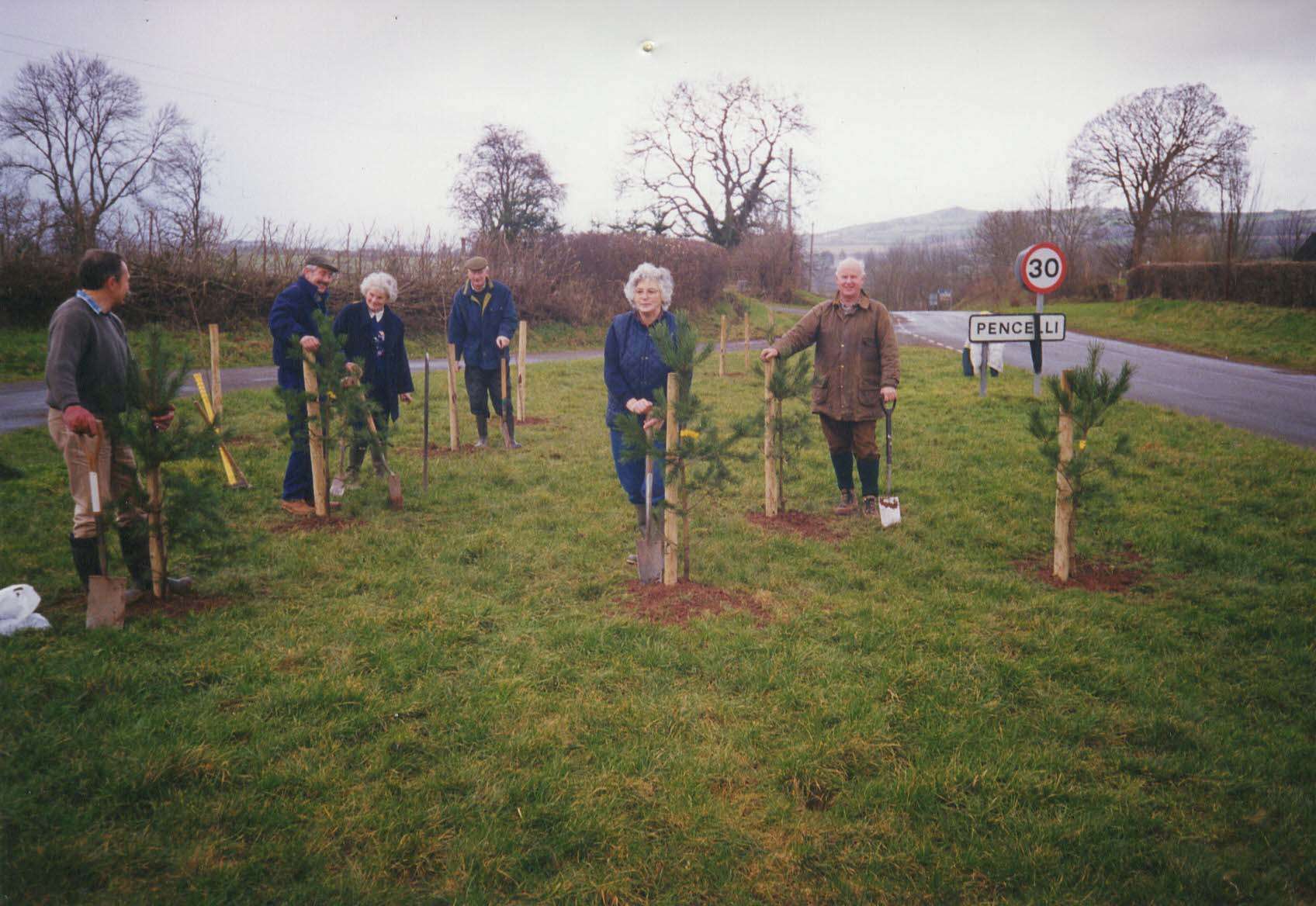
Millennium tree planting at Pencelli
CROSS OAK
Named after the former public house this small group of houses is situated around the junction of the unclassified road that passes the reservoir and the B4558 bypassing Talybont,. The main feature is the war memorial with Green Hill being the most prestigious house.
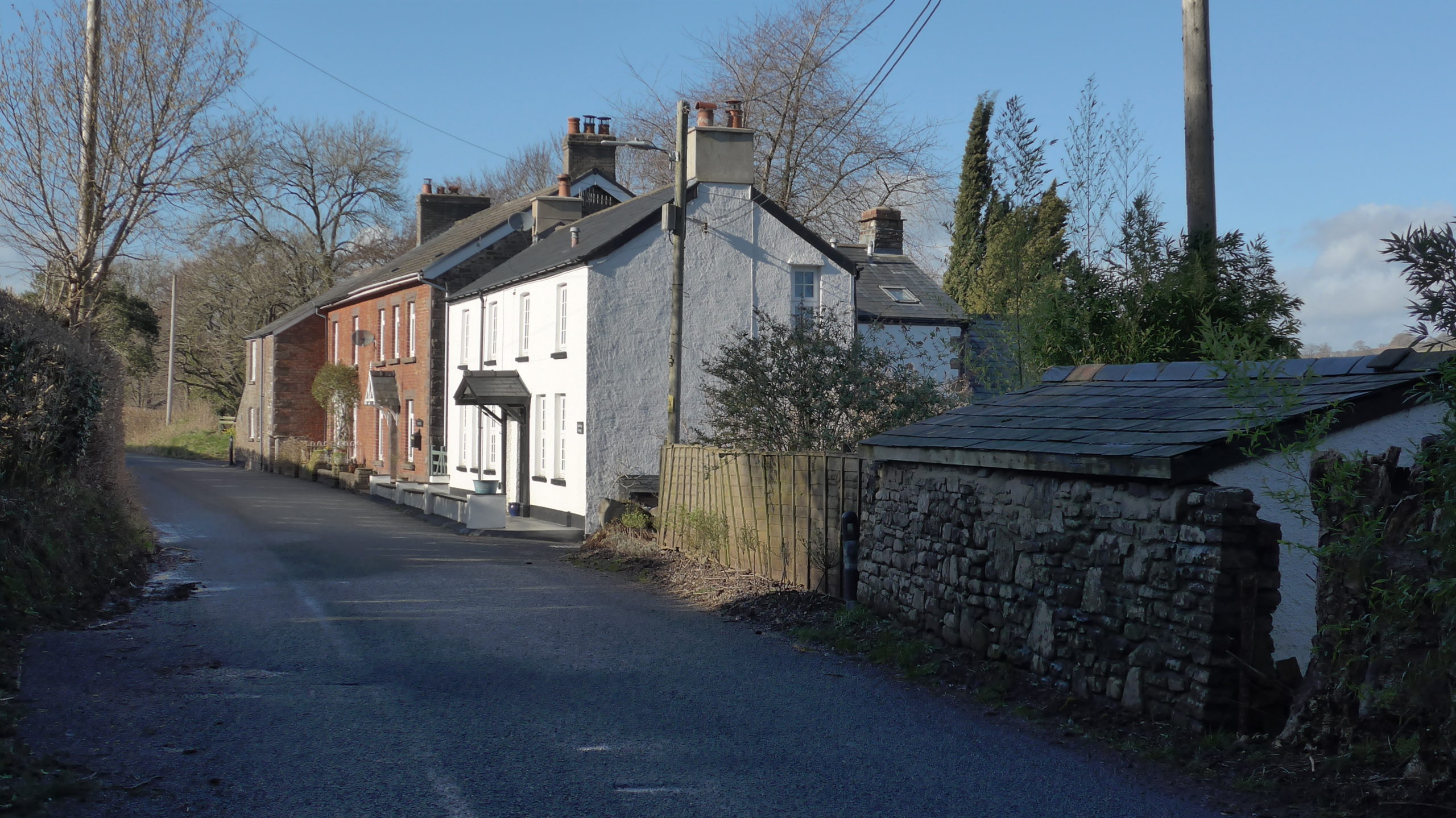
Houses at Cross Oak